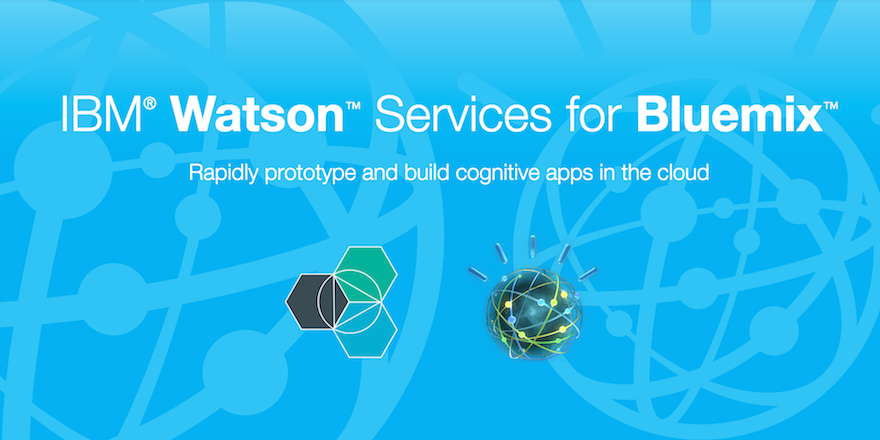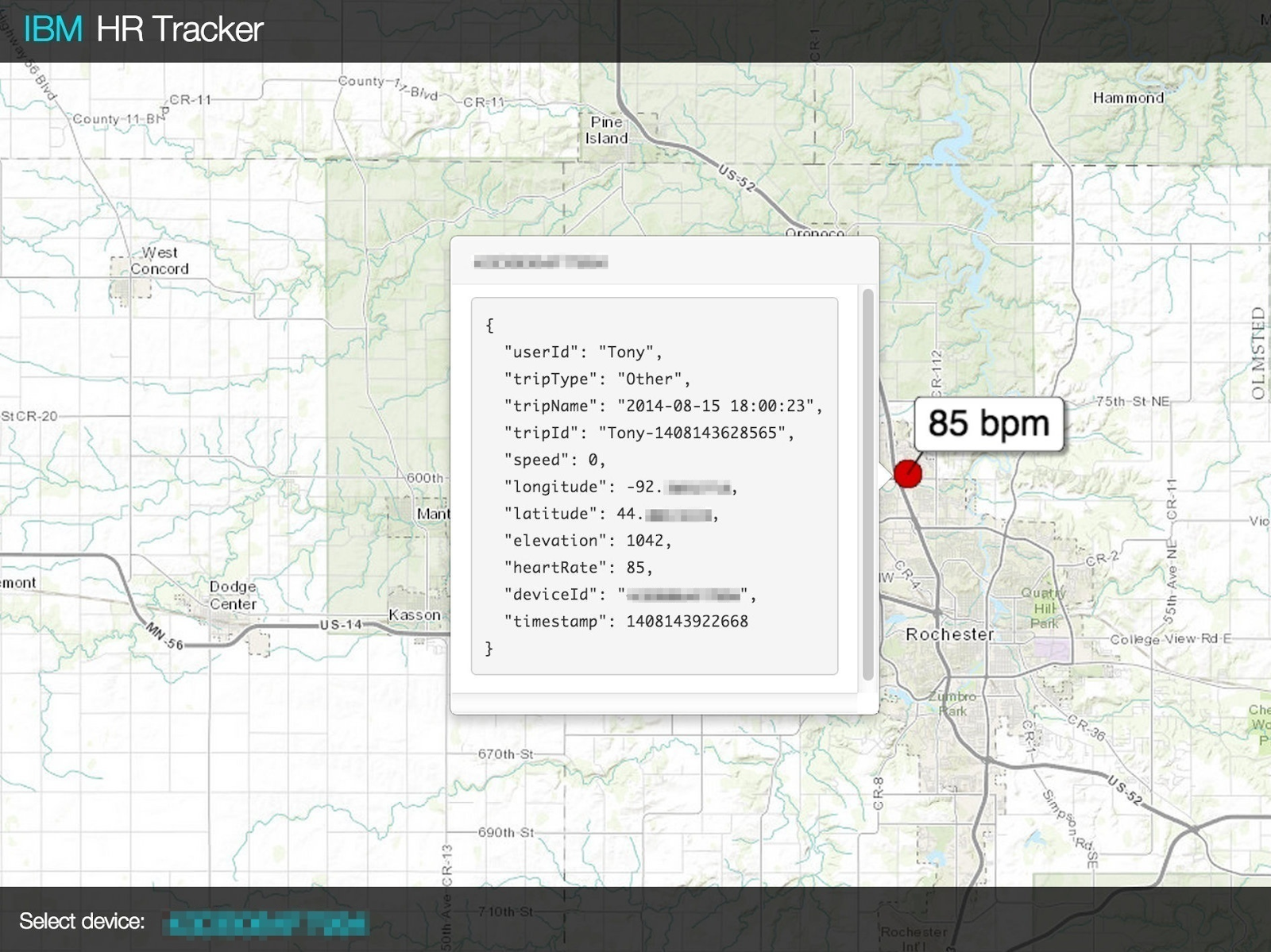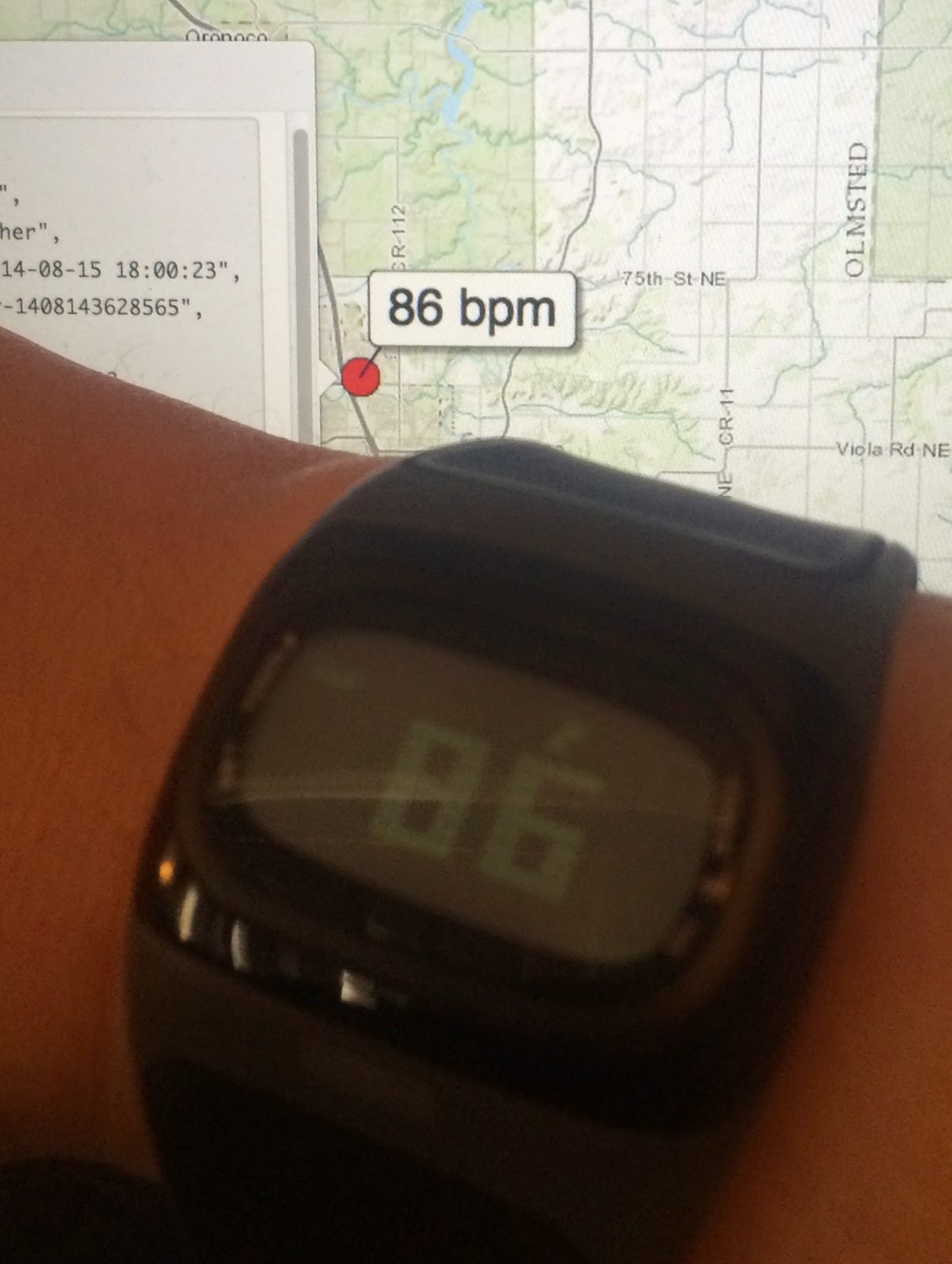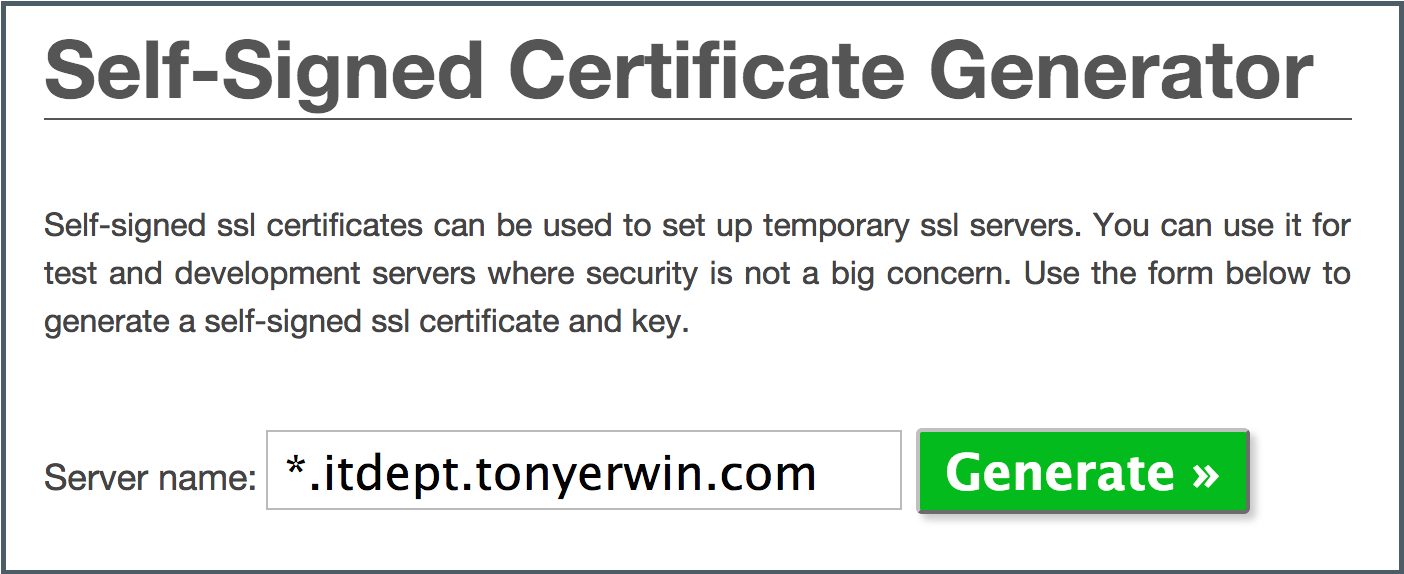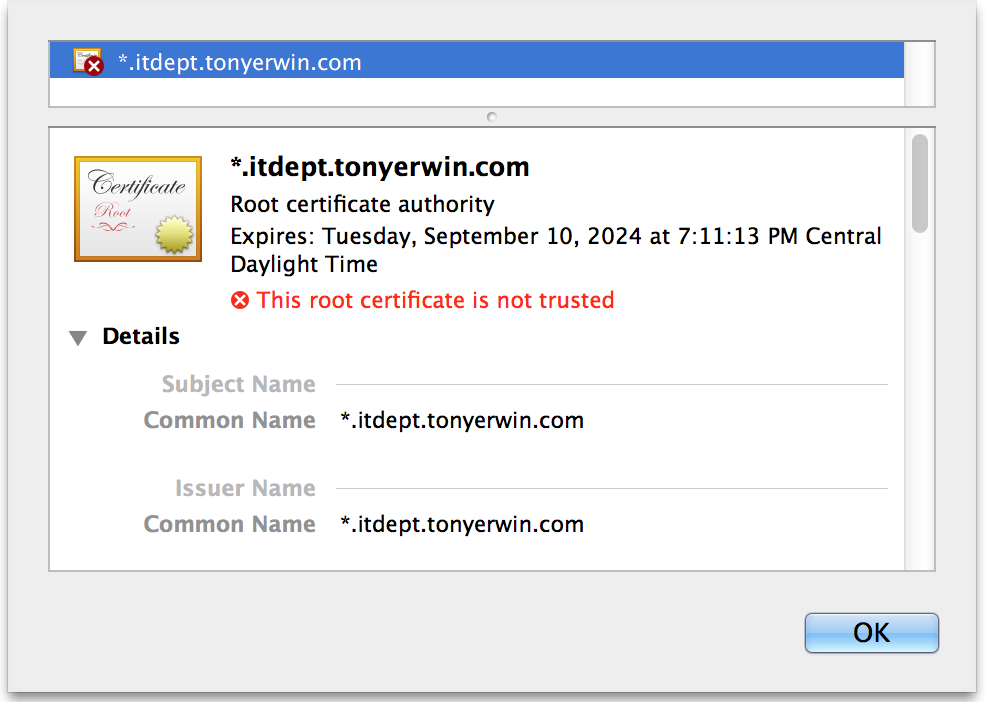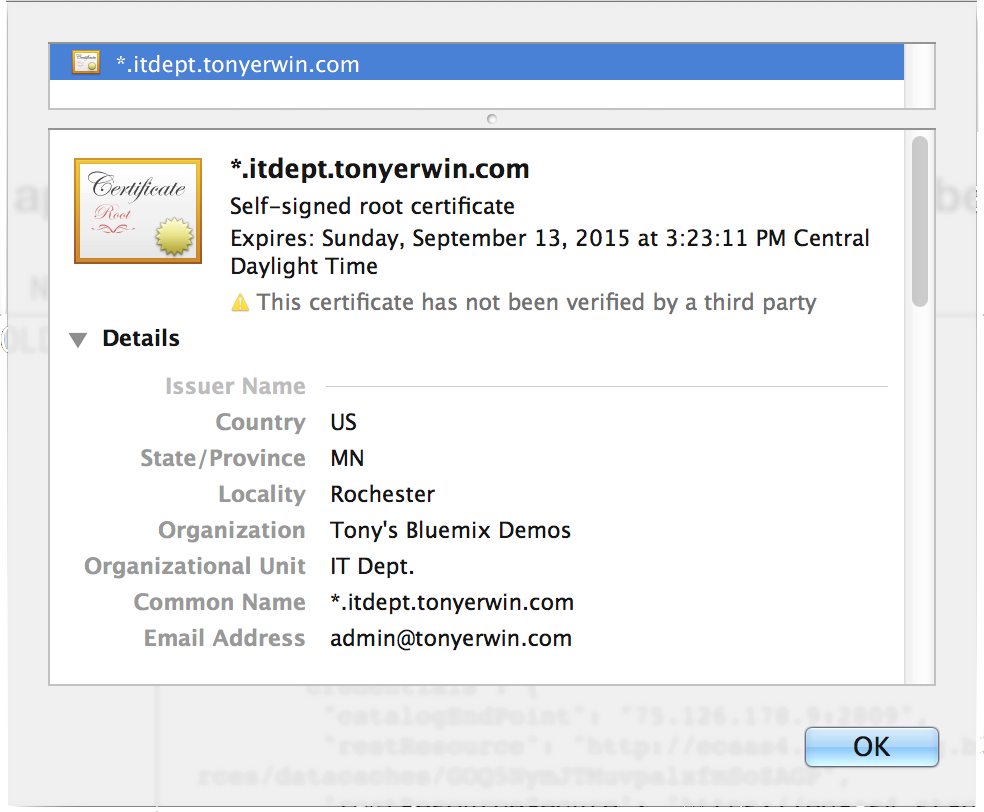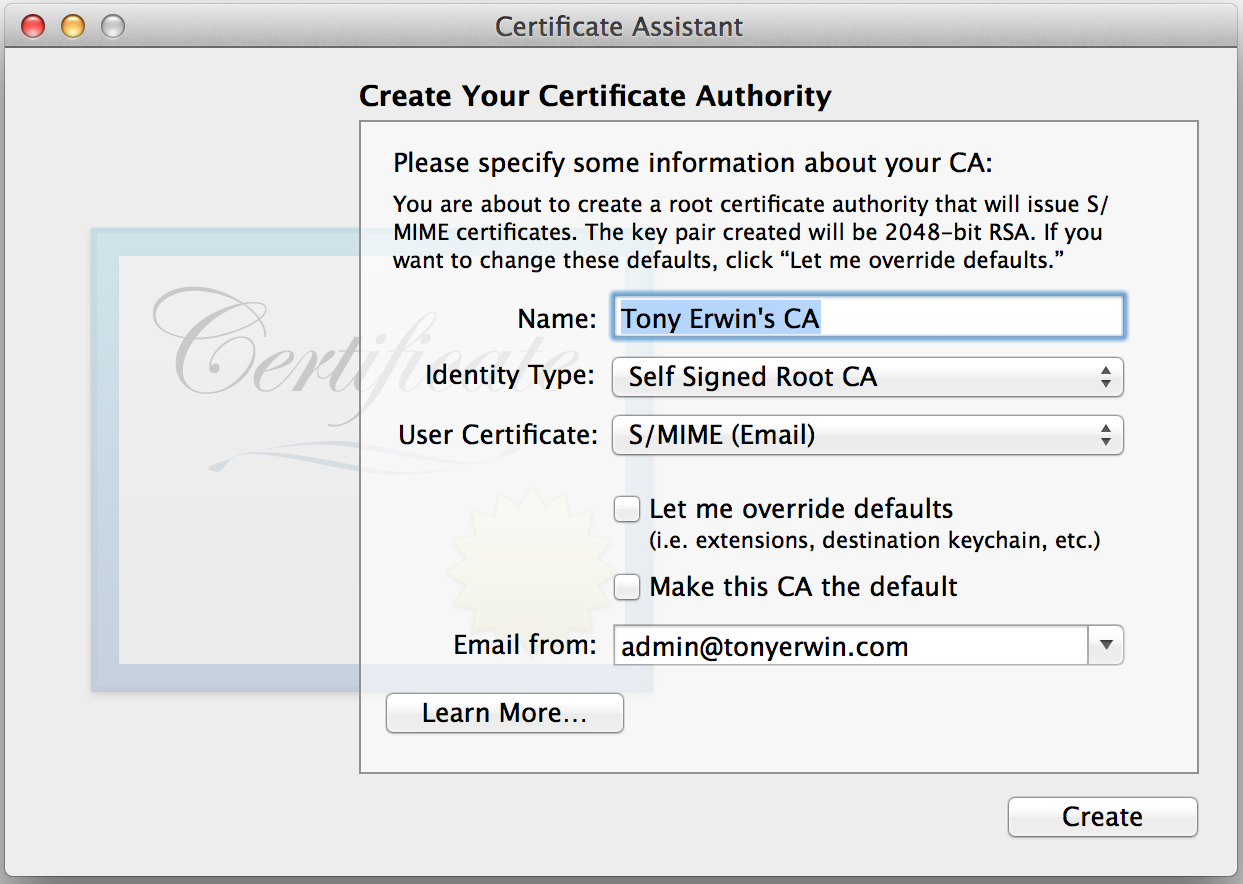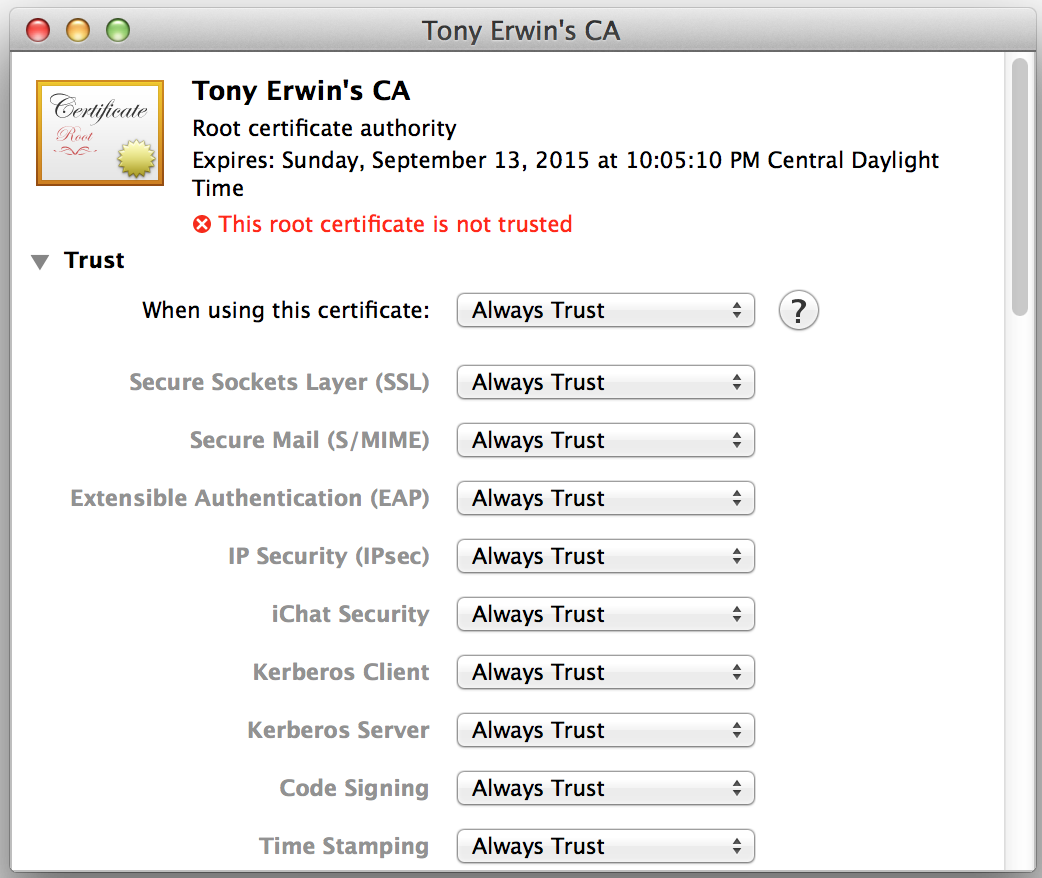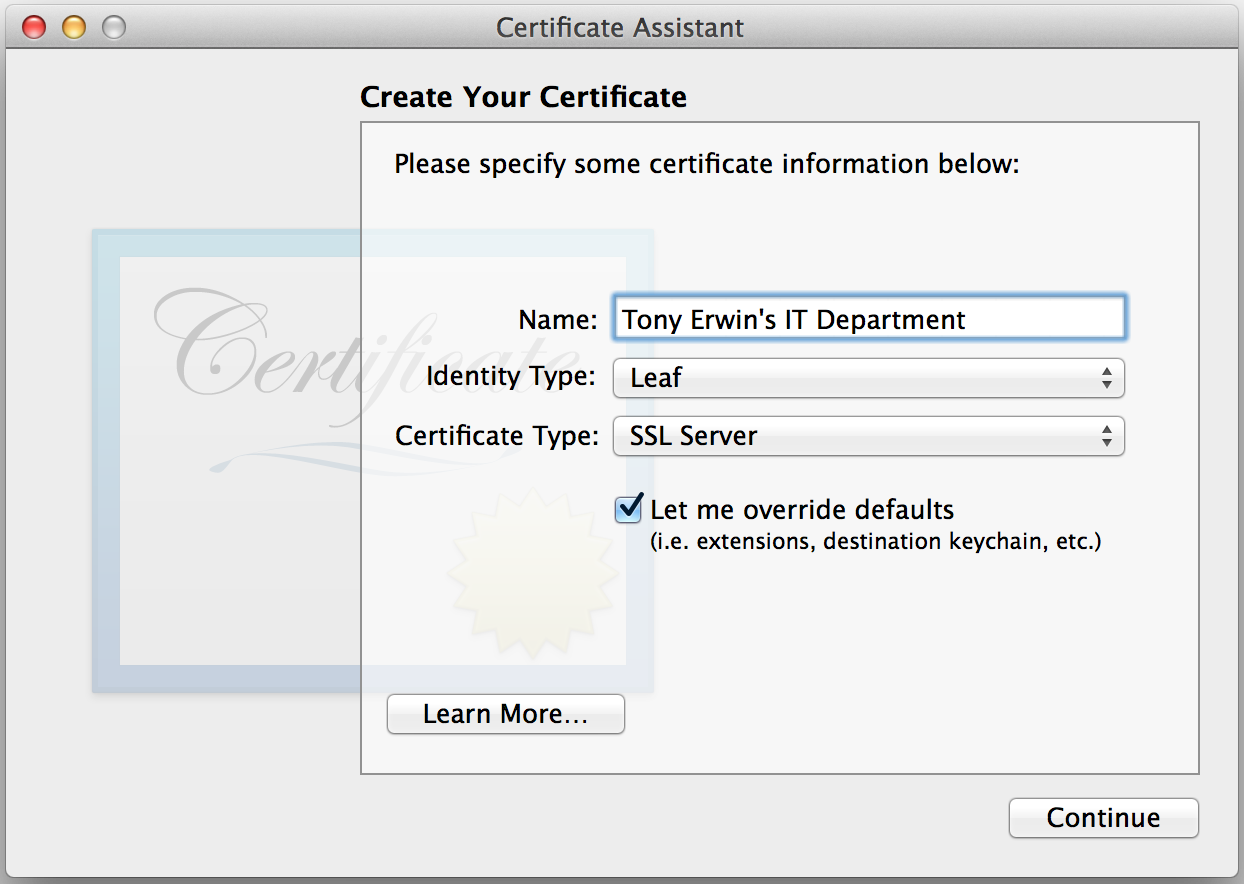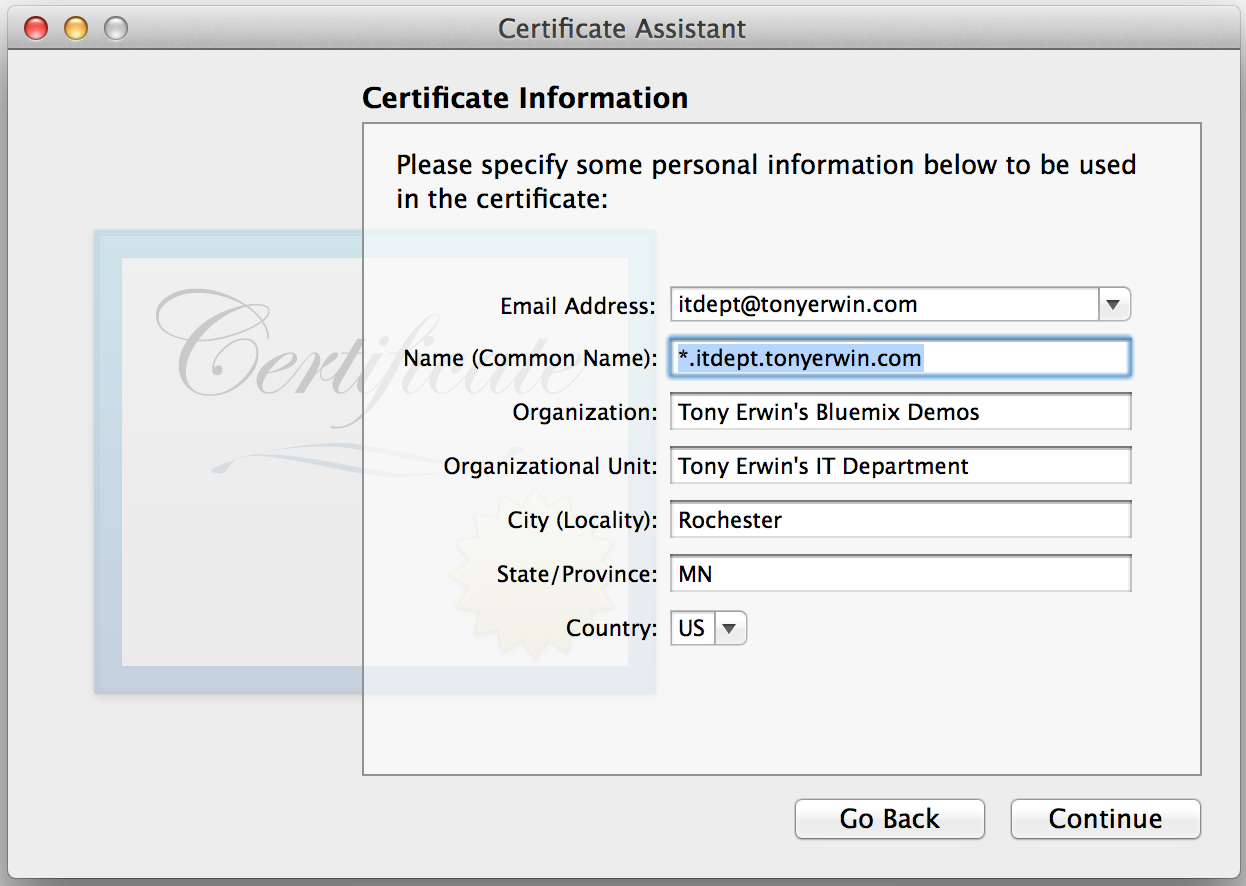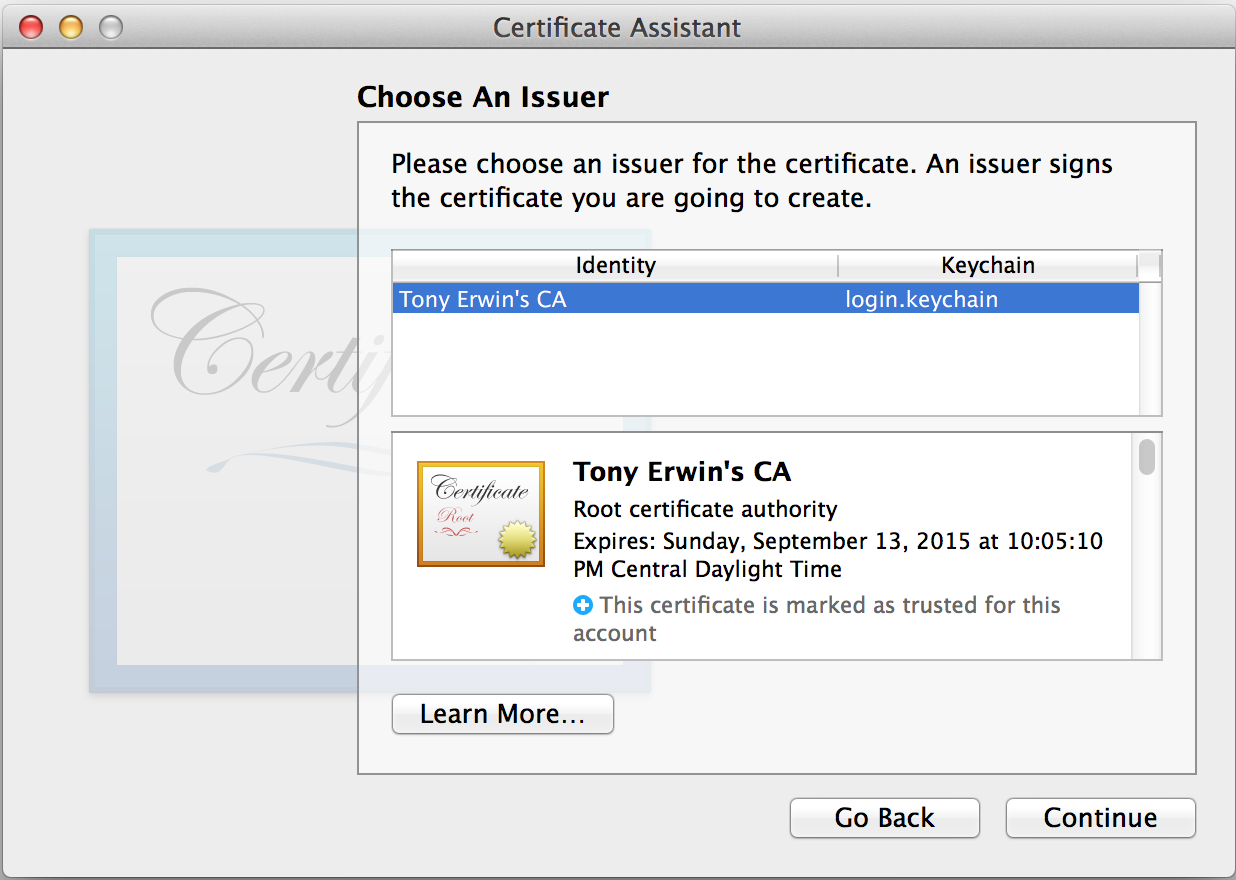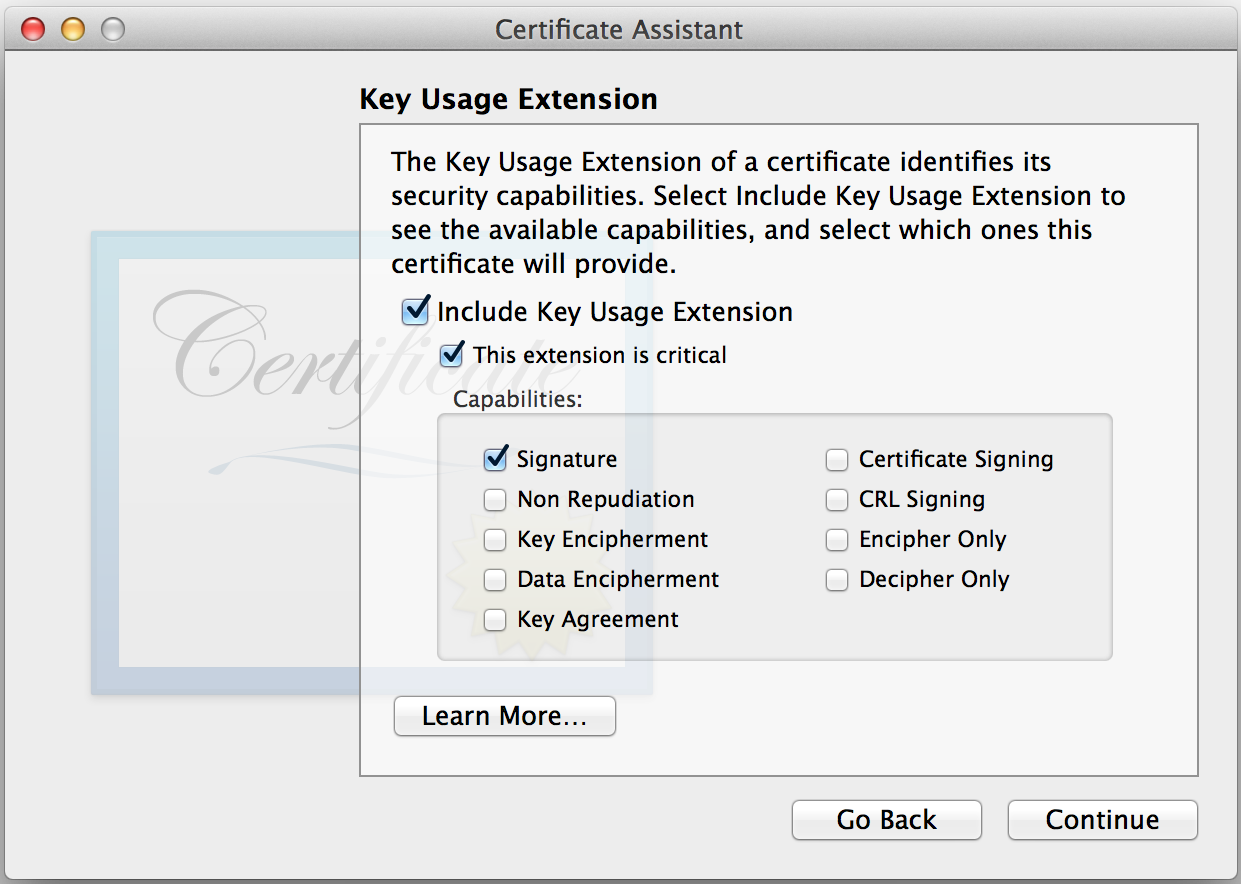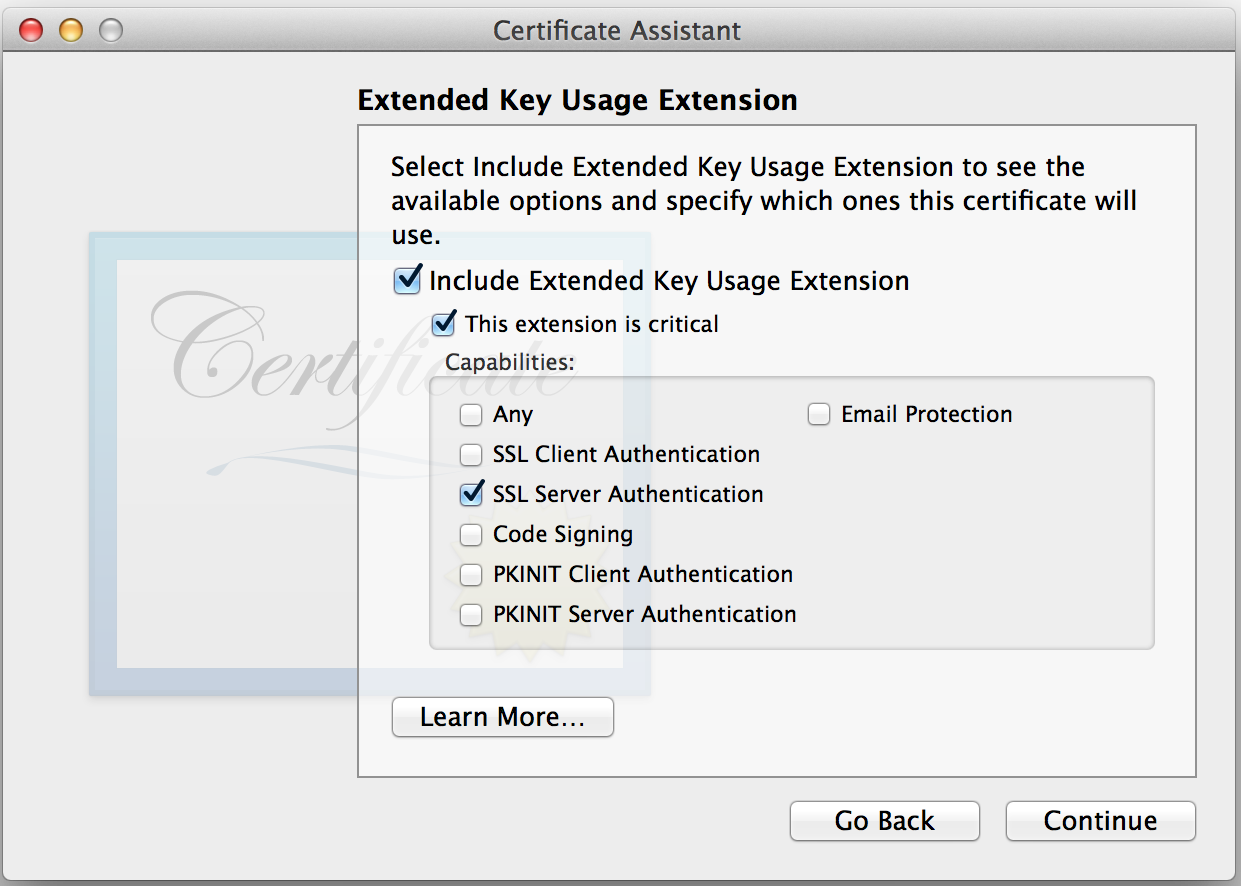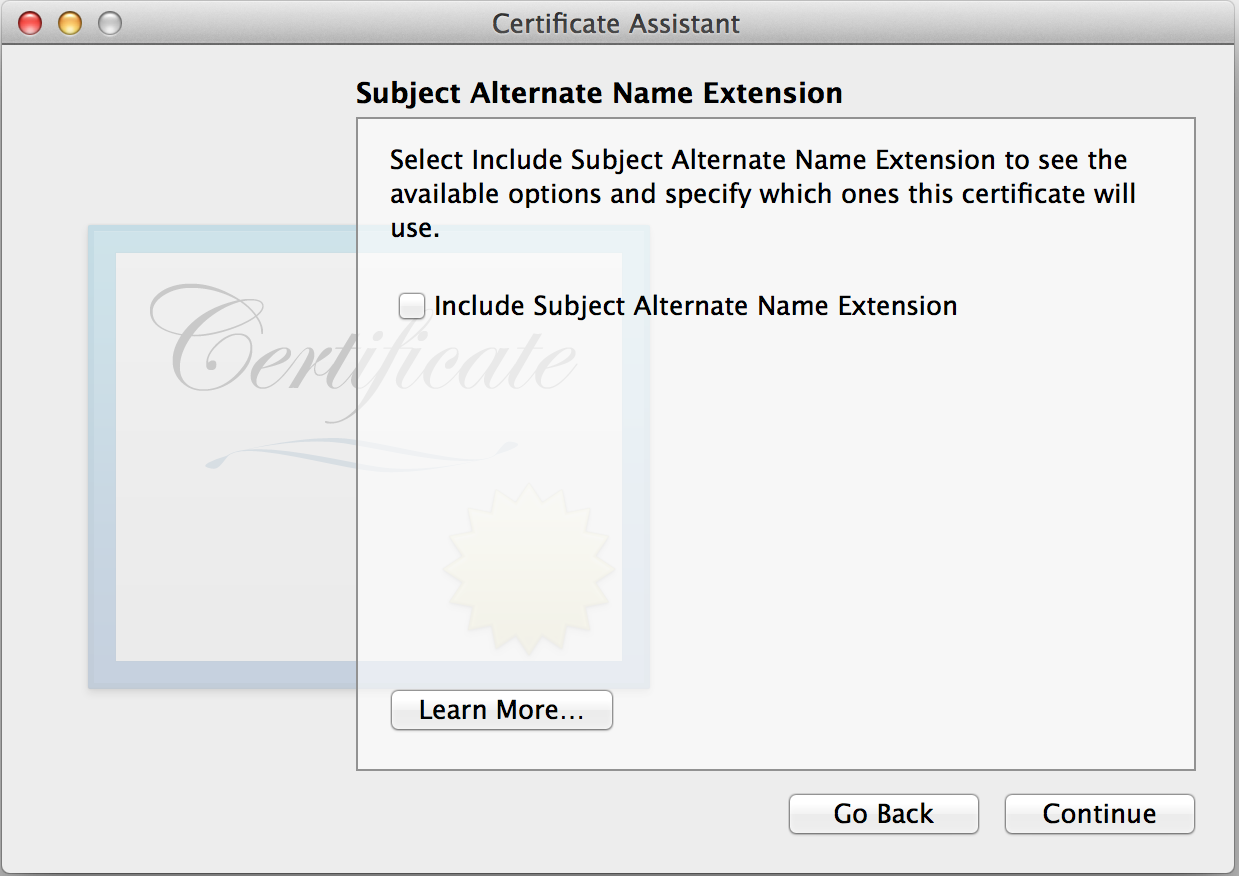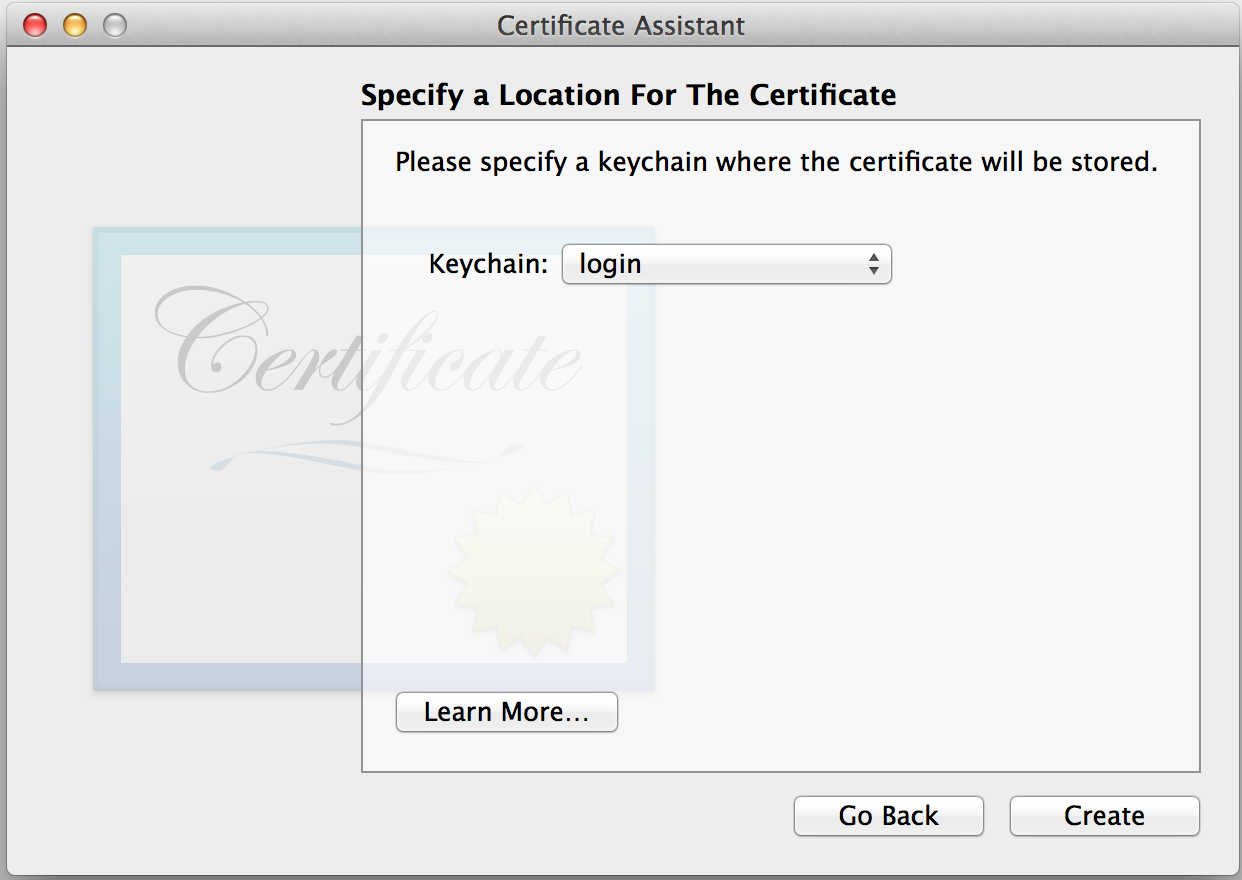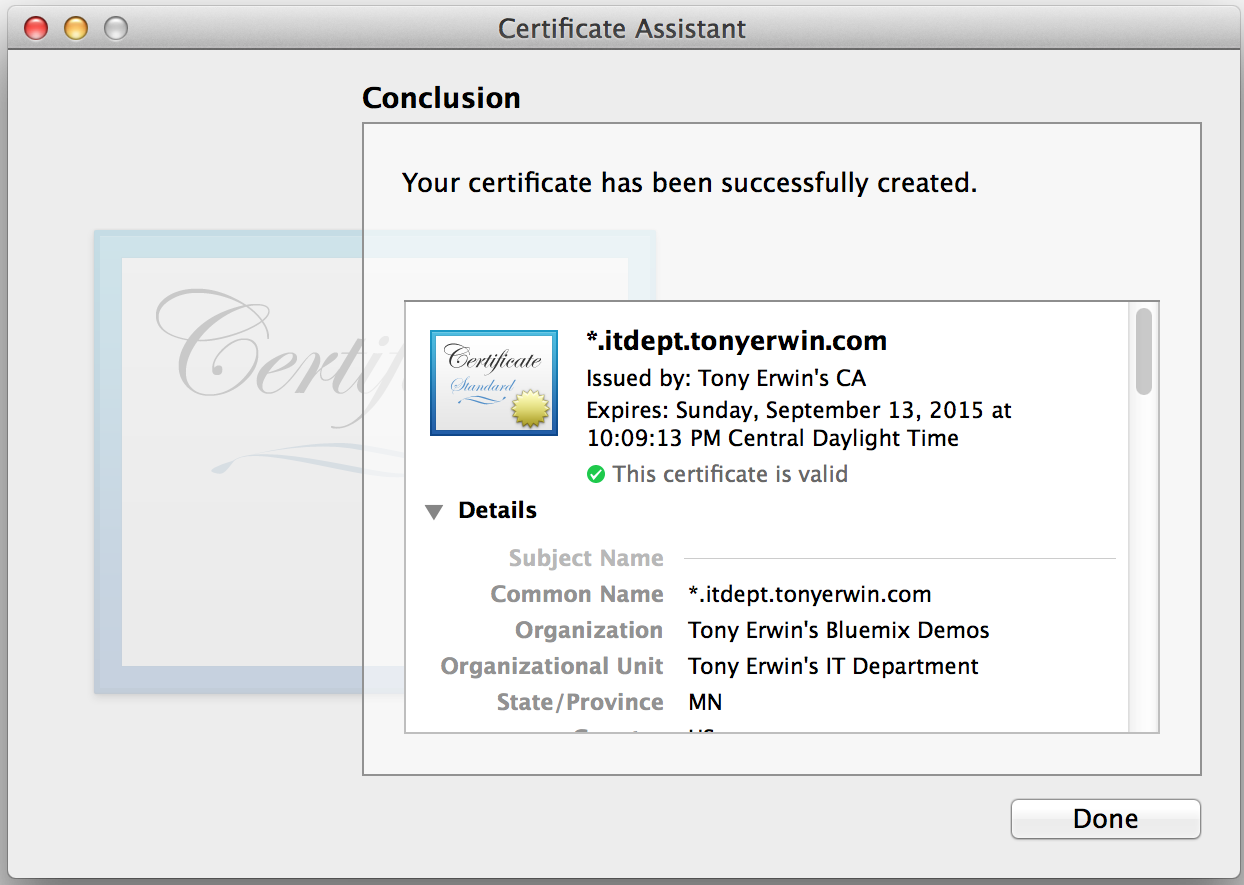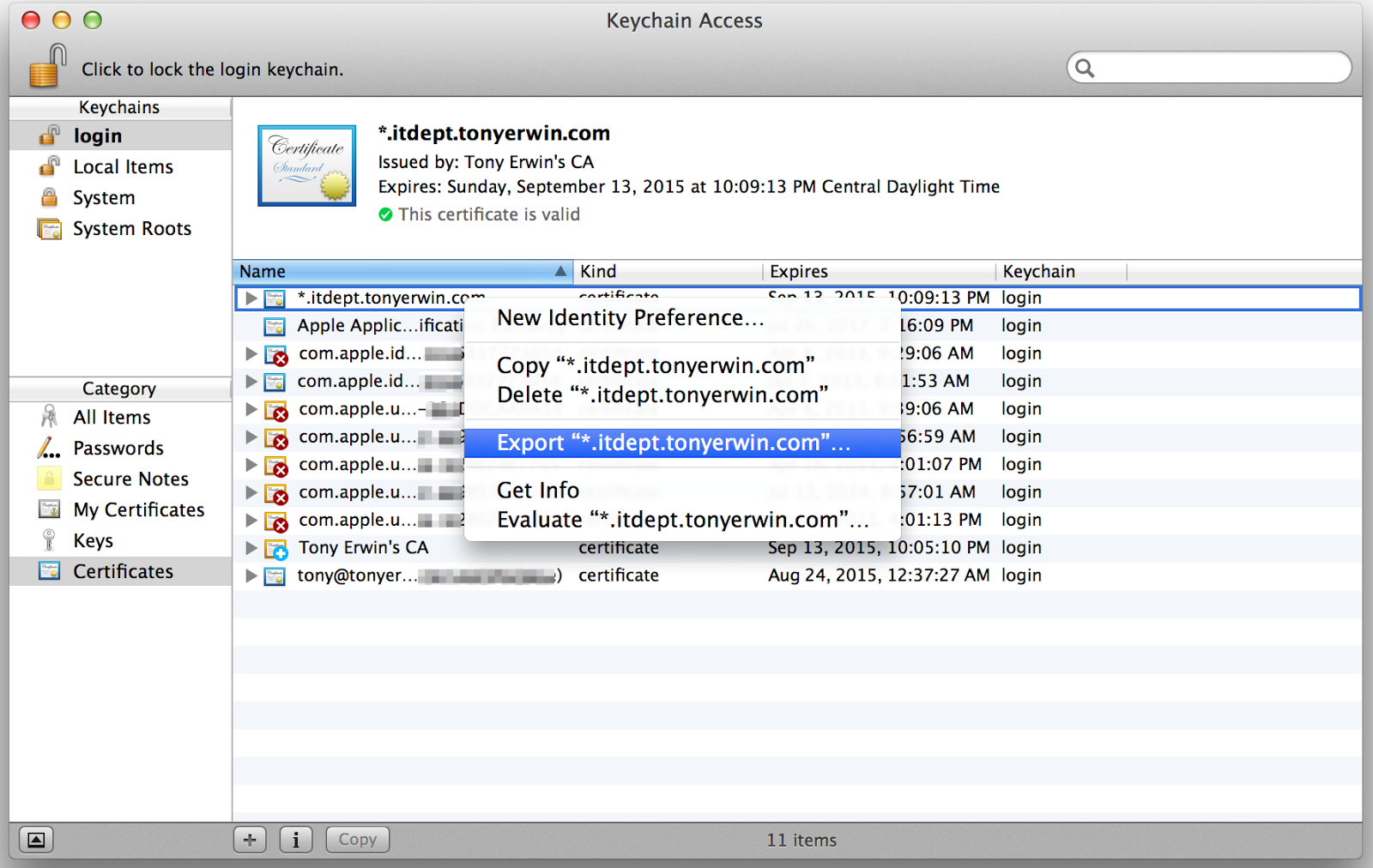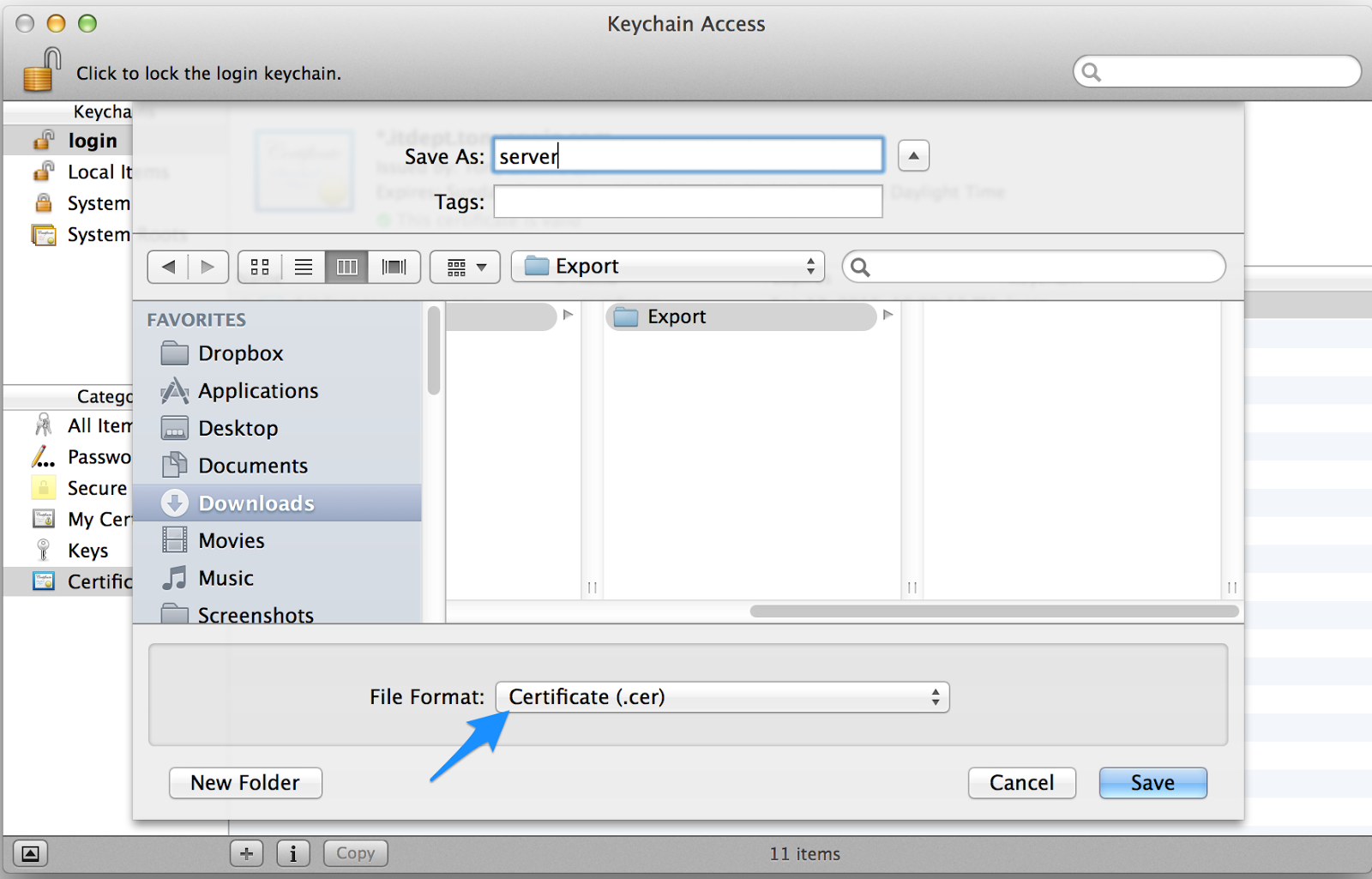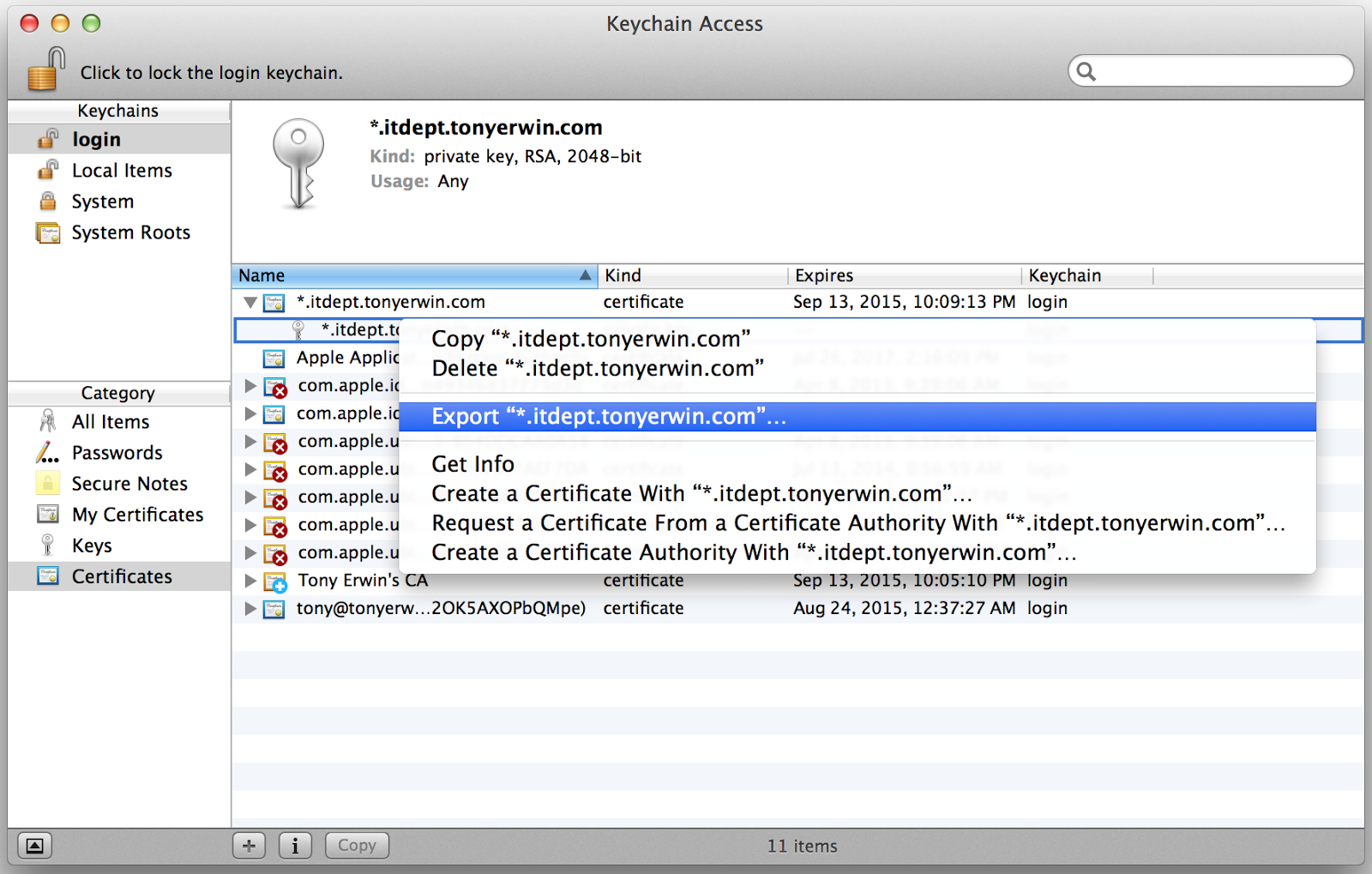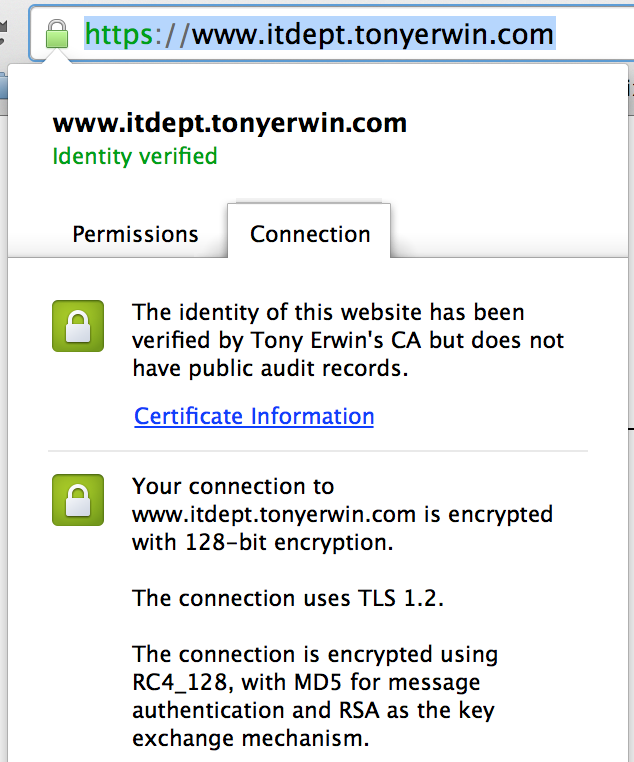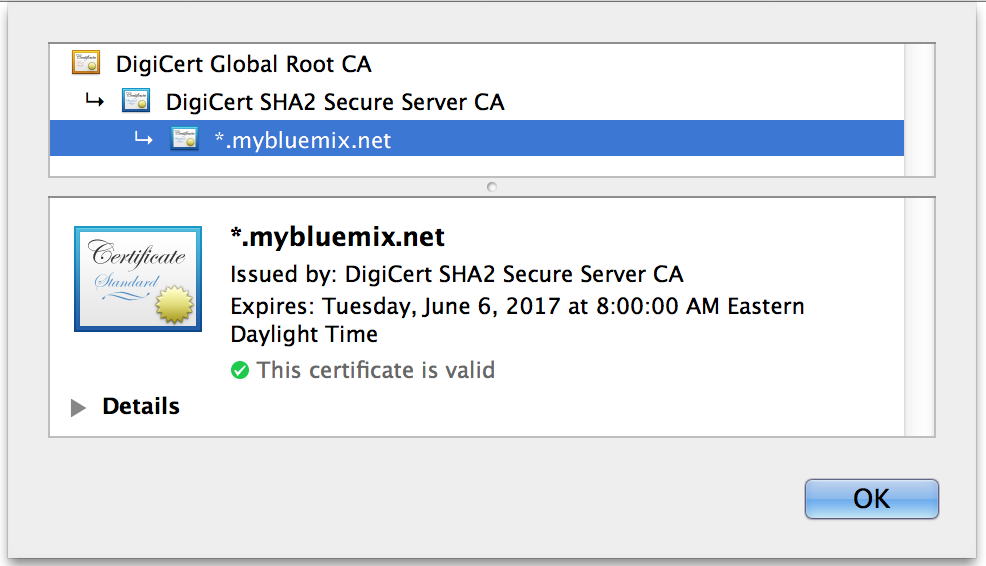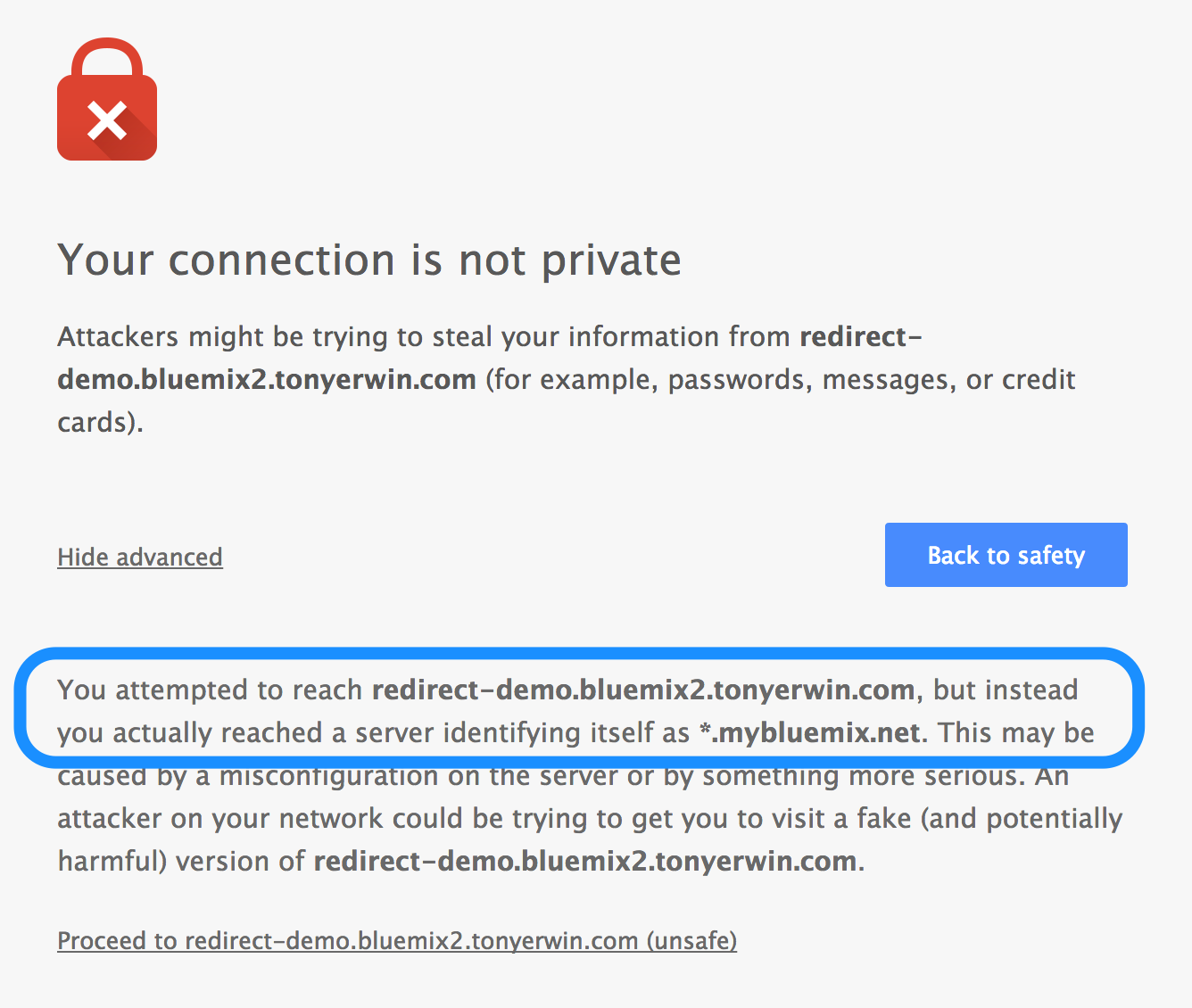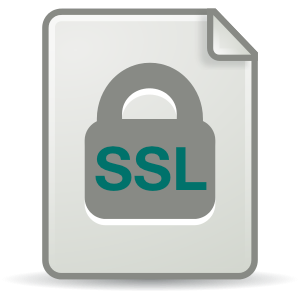
In my previous post Redirecting HTTP to HTTPS with Node.js & Express on IBM Bluemix, I described how you automatically get basic SSL support if you use the default domain when configuring your apps to run on IBM Bluemix. However, if you use a custom domain, you’ll get domain mismatch errors in the browser. These errors are ugly and likely to scare away users. In this post, I’ll show you how to fix this problem by associating your own SSL certificate with your custom domain. This new functionality went live in the August 2014 refresh of the Bluemix UI. Along the way, you’ll learn how to do the following:
- Add a custom domain.
- Setup an app to use the custom domain.
- Configure DNS so traffic is routed to your app.
- Upload an SSL certificate for your domain. NOTE: There is a limit of one upload per organization for trial users and four uploads per organization for pay-as-you-go and subscription users (updated Dec. 7, 2014).
Prerequisites
Before we get into the more fun part of the post, let’s cover some important prerequisites that will make things go more smoothly along the way. In particular, you will need to:
- Have (or acquire) ownership of a registered Internet domain name
- Obtain (or create) an SSL certificate, private key, and (optionally) an intermediate certificate
I’ll say more about these requirements in the next couple of sections.
Registered Domain Name
We will be creating a custom domain in Bluemix, and for it to function properly, you will need to own the domain name that you plan to use. In addition, it must be registered with a DNS hosting service that allows you to make configuration changes. For example, I own the tonyerwin.com domain (which points at the blog you’re reading right now) and use GoDaddy for DNS hosting. (NOTE: GoDaddy is just one of many suitable providers.)

Even if you don’t own a domain or have access to your DNS provider, you can still explore the functionality in this article. But, you will have to edit your hosts file. I’ll say a little more about that option later on in the Configuring DNS for Custom Domains section.
SSL Certificates
When it comes time to associate a certificate with your domain, you will need the following files with the noted attributes:
- Certificate
- Digital document that binds a public key to the identity of the certificate owner, thereby enabling the certificate owner to be authenticated.
- Generally issued and signed by a certificate authority. However, for testing and development purposes you may use a self-signed certificate.
- File types supported:
- PEM (
.pem, .crt, .cer, and .cert)
- DER (
.der or .cer )
- PKCS #7 (
.p7b, .p7r, .spc)
- Limitation: Bluemix supports only one certificate per file. That is, you cannot bundle a certificate and intermediate certificate into one PKCS #7 bundle.
- Private key
- Algorithmic pattern used to encrypt messages that only the corresponding public key can decrypt. The private key is also used to decrypt messages that were encrypted by the corresponding public key.
- File types supported:
- PEM (
.pem, .key)
- PKCS #8 (
.p8, .pk8)
- Intermediate certificate
- You should use an intermediate certificate to verify the authenticity of the main certificate. Intermediate certificates are typically obtained from a trusted third-party. You might not require an intermediate certificate if using a self-signed certificate for testing your application prior to deploying it to production.
See the Uploading SSL Certificates article in the Bluemix Documentation for the most current information on supported certificate types.
Adding a Custom Domain
Now that we have the prerequisites out of the way, let’s start by adding a custom domain via the Bluemix UI. (NOTE: You can also create domains with the cf command line tool.)
- Log in to the Bluemix UI.
- In the banner, open the Organizations menu and choose Manage Organizations.

- In the Manage Organizations pane, make sure your organization is selected in the tree on the left side. Then, click Domains to view the custom domains for your organization.
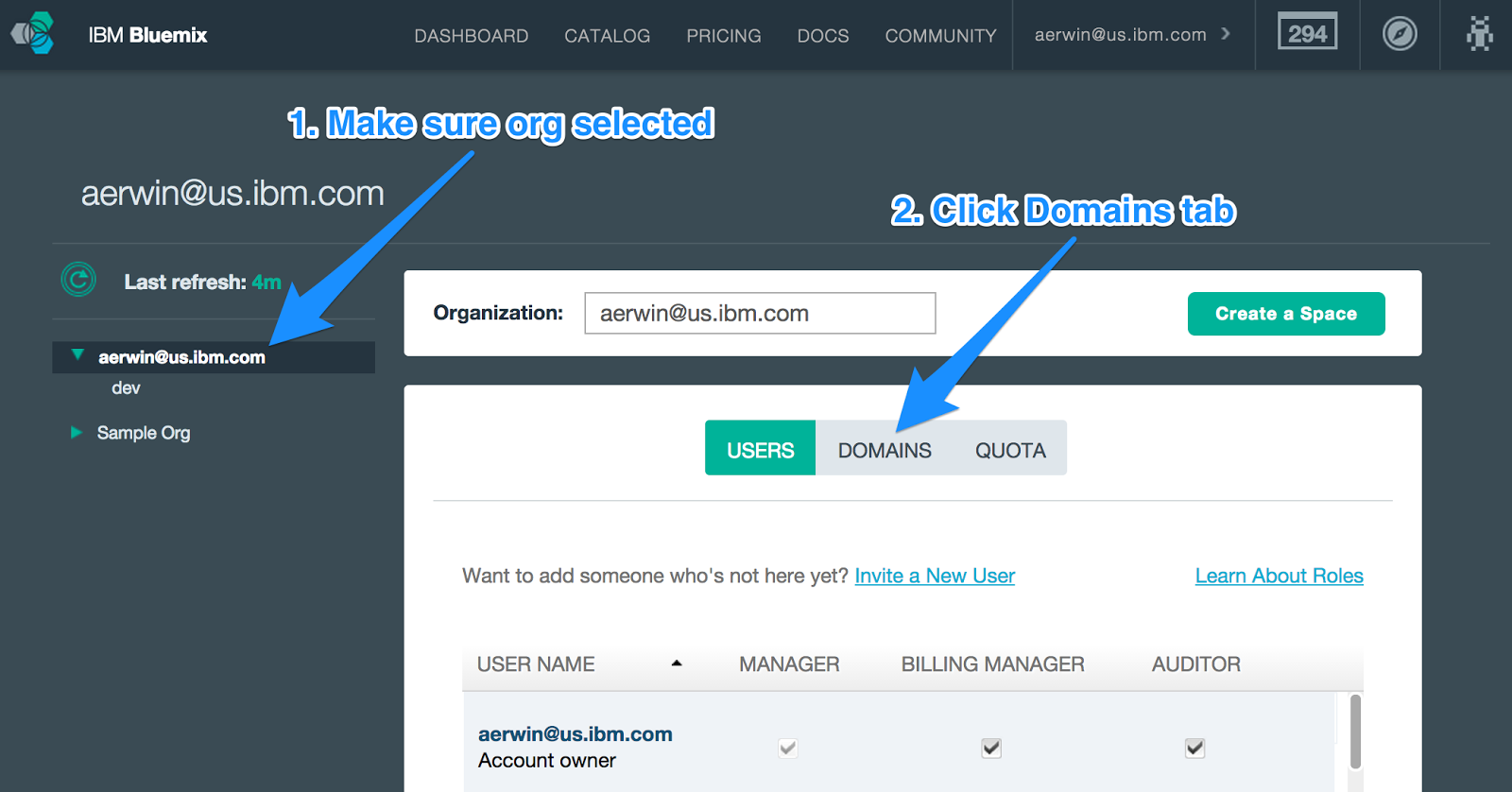
- On the Domains tab, click the Add Domain button.
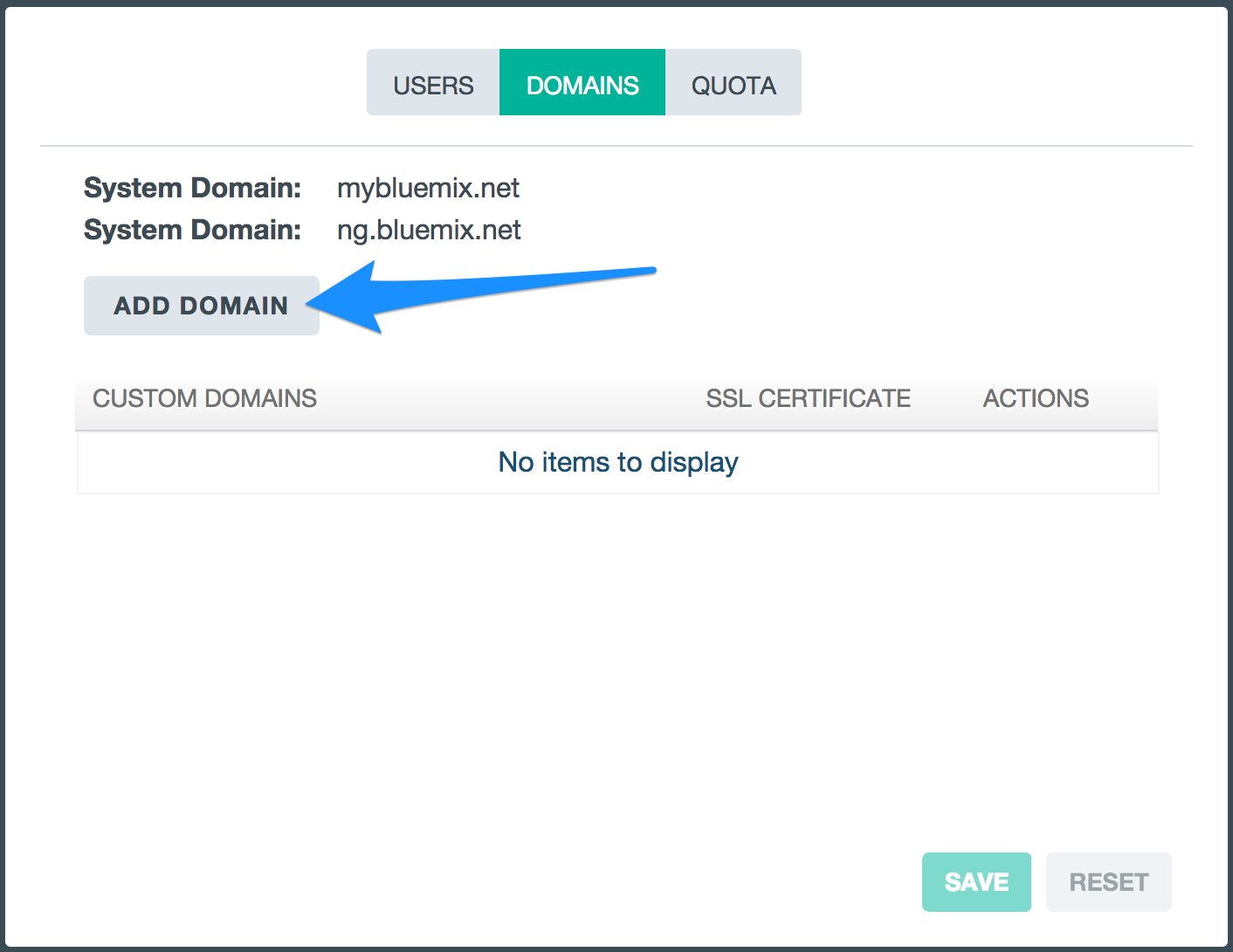
- Enter your custom domain in the text box in the newly added row. As mentioned earlier, this should be a domain that you own and that is registered with a DNS hosting service. For my custom domain, I own the
tonyerwin.com domain, and I want to use the bluemix.tonyerwin.com domain for my demo apps that will be deployed to Bluemix.
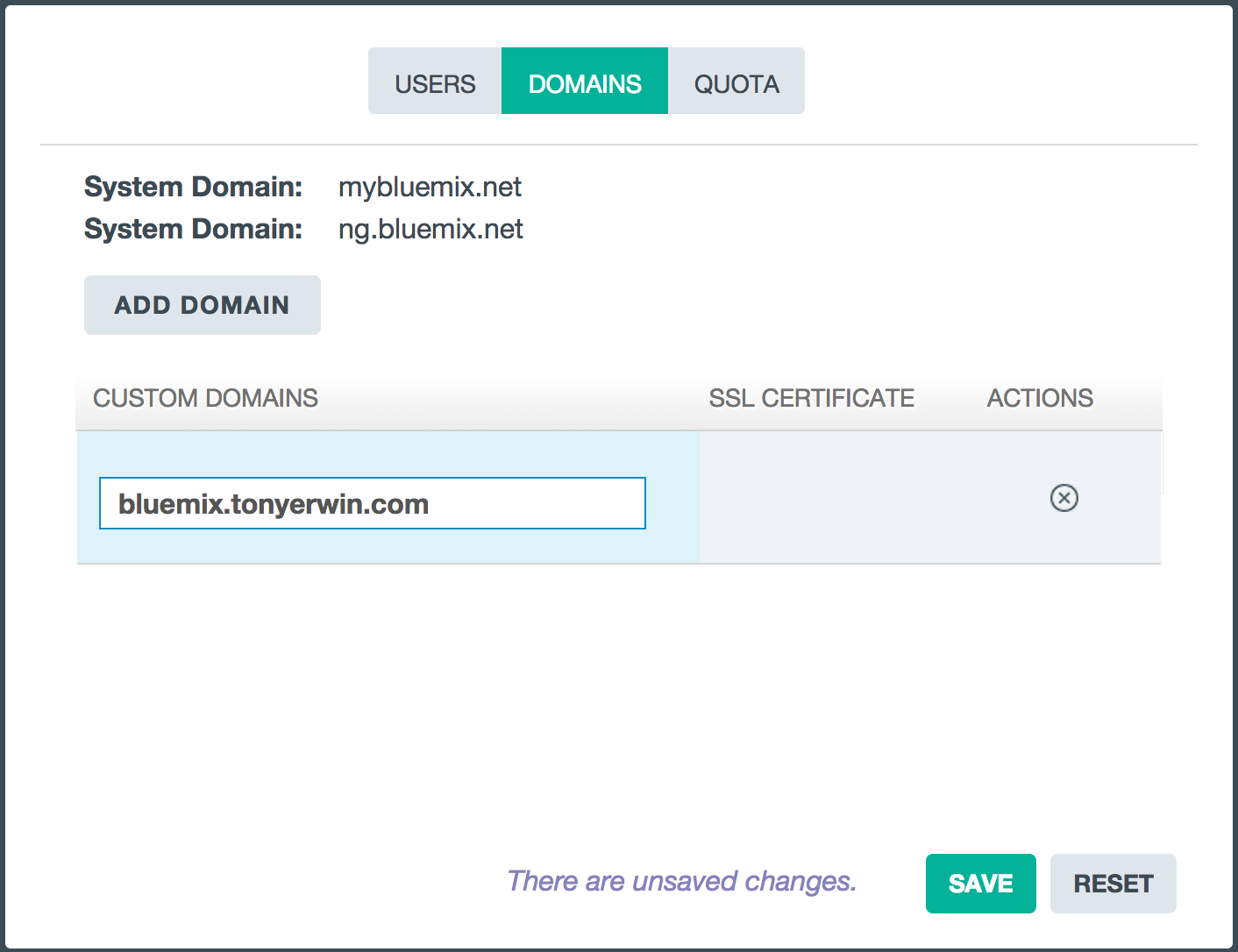
- Click the Save button. After the save operation completes, you should notice a new icon in the SSL Certificate column. We’ll come back to it later, but clicking this icon is how you would start the process of uploading a certificate for your domain.
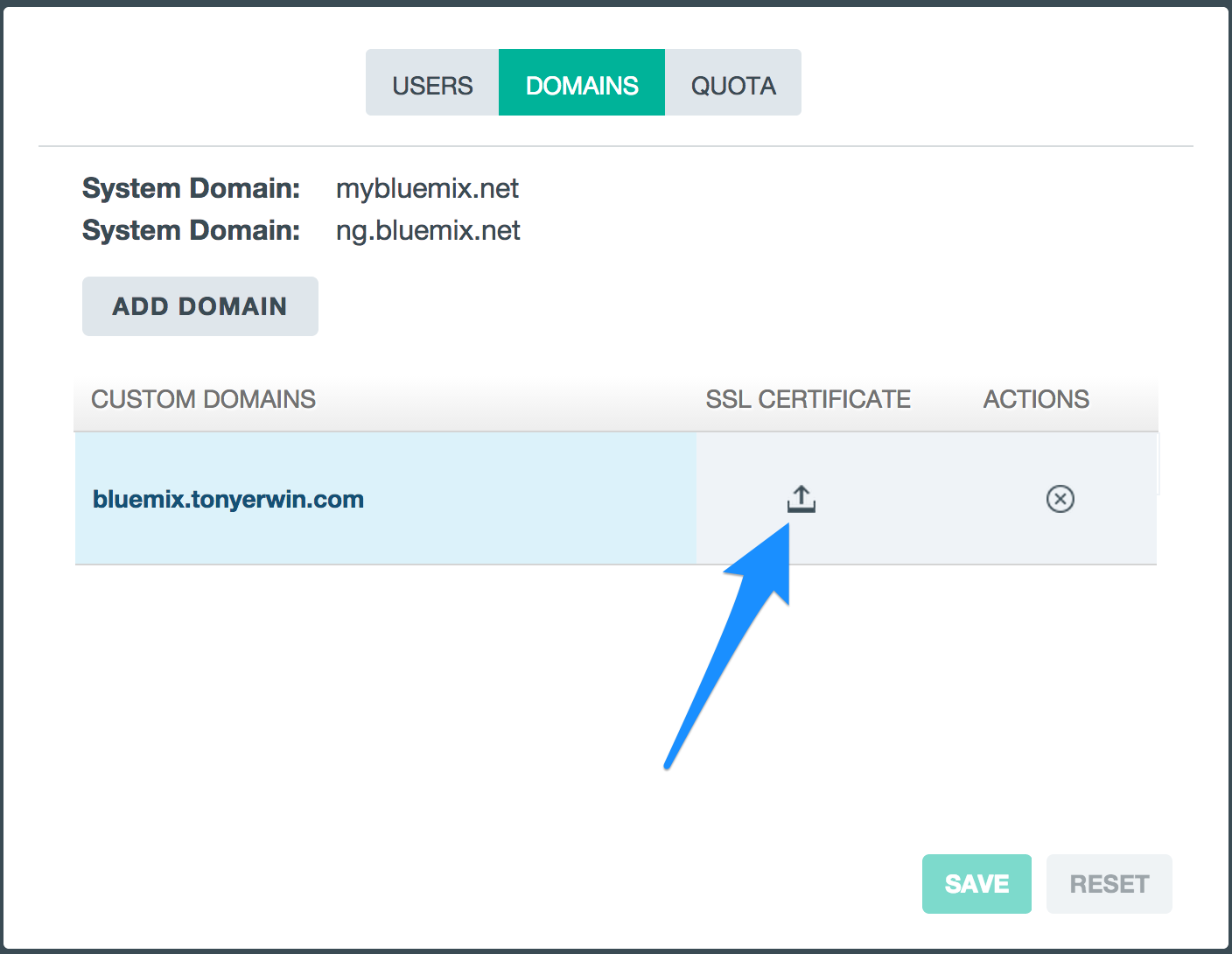
Using a Custom Domain in an App
Now, that we have a custom domain, let’s setup an app that makes use of it. We can either create a brand new app or edit the routes of an existing app. And, in the rest of this section, I’ll walk you through both paths.
Creating a New App With a Custom Domain
If you want to create a brand new app, do the following:
- Click on the Catalog in the Bluemix UI banner.
- In the Starters section, click on one of the runtimes like Liberty for Java™, SDK for Node.js™, Ruby on Rails, or Ruby Sinatra.
- On the details page for the selected runtime:
- Enter a
Name for your application.
- Optionally change the default
Host.
- From the
Domain pulldown, select your custom domain.
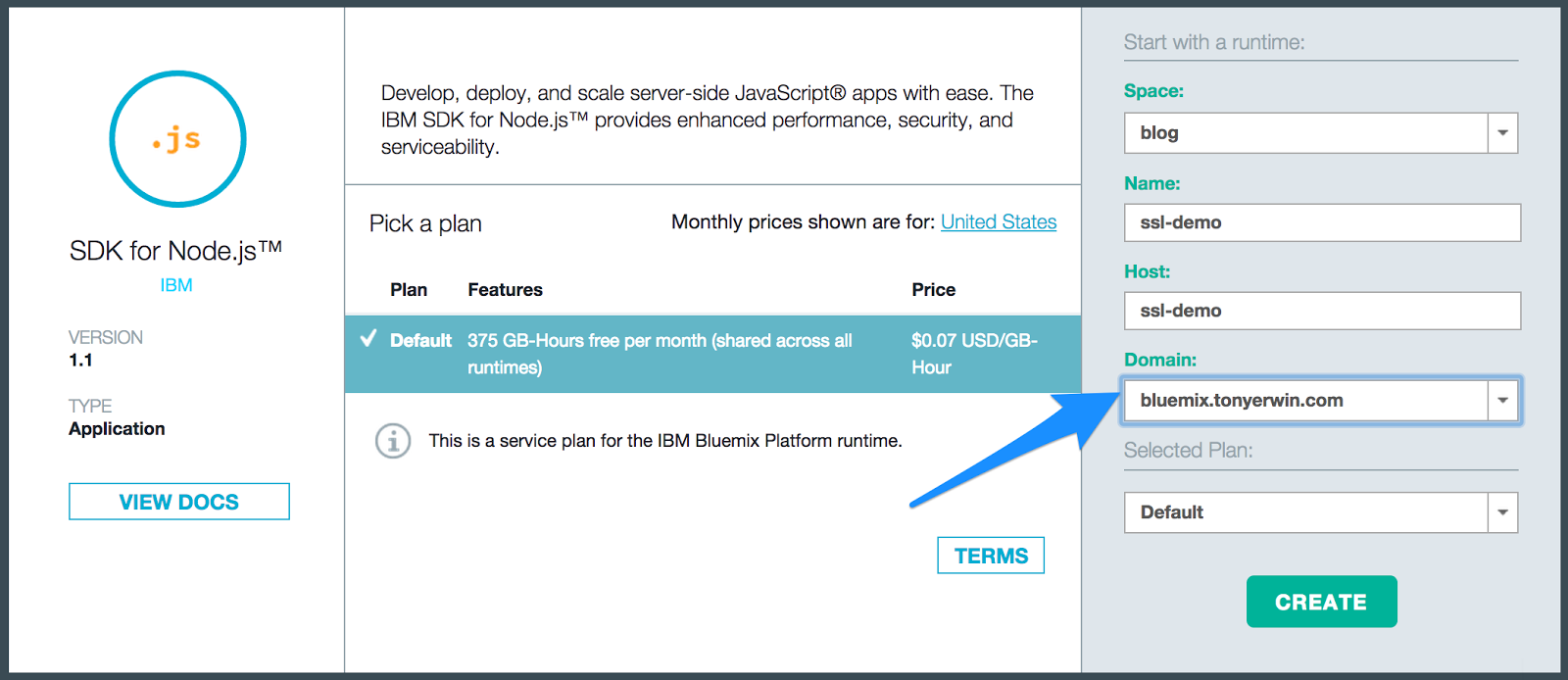
- Click the
Create button to create your app. After creation, you will be taken to the App Details view of your new app.
Editing Routes of an Existing App to Use a Custom Domain
If you prefer to edit the route of the existing app, follow the steps below:
- Go to the App Details view for your app. If you created your app in the last section, you’re probably already there. Otherwise, find your app in the Dashboard and click on it.
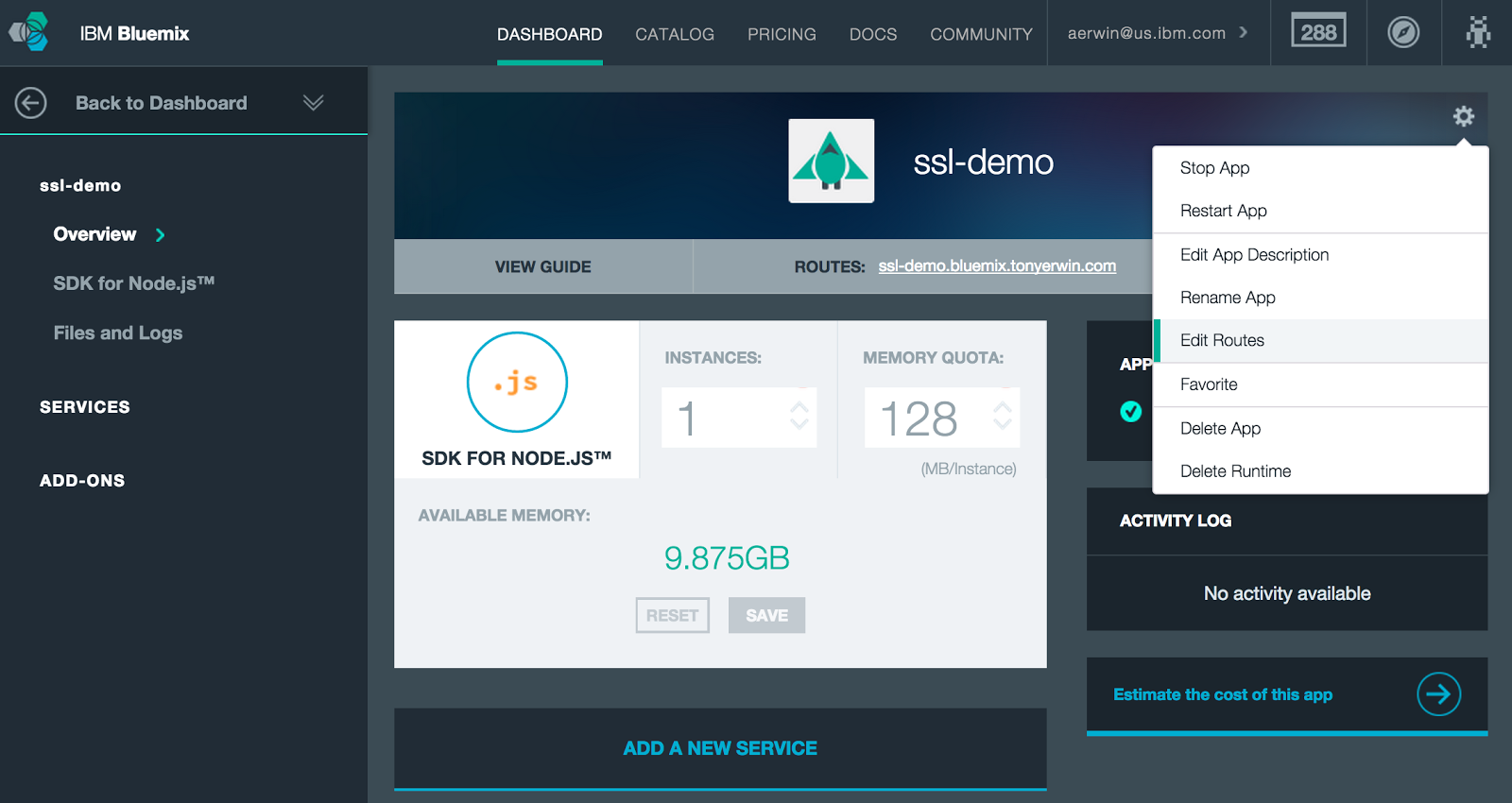
- Open the “gear” menu in the upper right hand corner of the App Details view, and choose the
Edit Routes menu item.
- In the Edit Routes dialog, you can add and remove routes. In addition, each route offers a pulldown that includes all available domains and allows you to choose any of your custom domains.
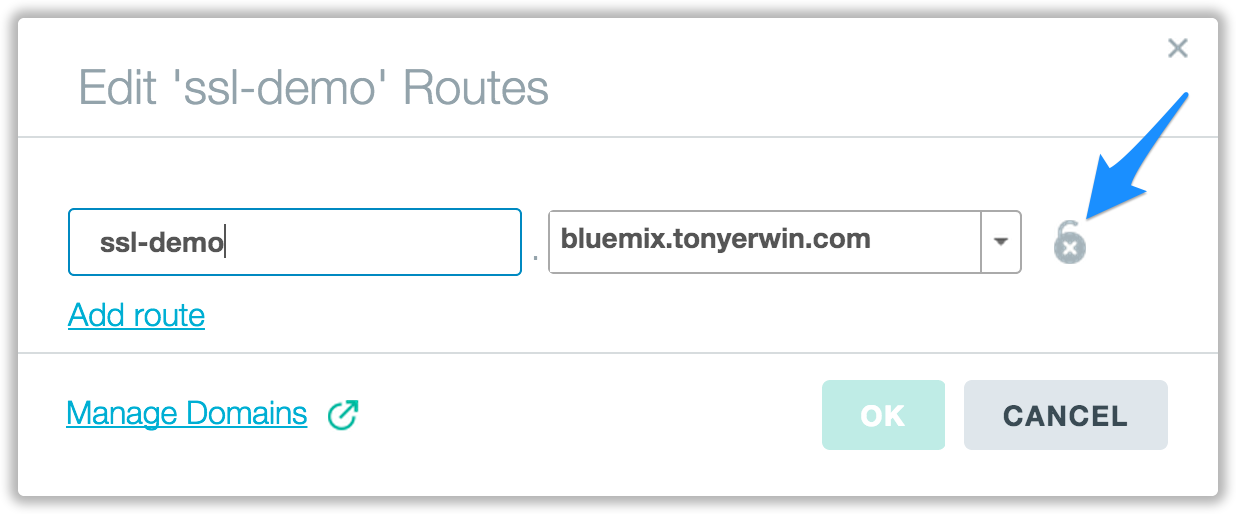
- Notice in the screen shot above that my app has one route,
ssl-demo.bluemix.tonyerwin.com. Also, note that the SSL status icon to the right of the route shows an open padlock. This indicates we have not yet uploaded an SSL certificate for the route’s domain.
At this point, we have an app using a route making use of our custom domain. However, if you tried to access your app via the route, it would fail. To resolve this, you need to do some DNS configuration. Specifically, you need to add a CNAME record that maps your domain to the hostname of the Bluemix router. Since we plan to use our own SSL certificates, the hostname we want to reference is secure.us-south.bluemix.net. NOTE: The host to use varies by the region your app is hosted in:
- US South:
secure.us-south.bluemix.net
- US Easty:
secure.us-east.bluemix.net
- London:
secure.eu-gb.bluemix.net
- Frankfurt:
secure.eu-de.bluemix.net
- Sydney:
secure.au-syd.bluemix.net
The mechanism for adding a CNAME record is going to vary depending on your provider. For GoDaddy, it’s rather simple. I go to the DNS Management configuration page for my tonyerwin.com domain. From there, I click the Add button. This brings up a panel like the one in the screenshot below. On it, I’ve set Type to CNAME, the Host to *.bluemix (the tonyerwin.com part is assumed), and Points to to secure.us-south.bluemix.net.

If you don’t use GoDaddy, you should still find a similar mechanism from your provider. Once you commit these kinds of changes, you will have to wait some period of time for the changes to propagate. Once they do, you should be able to access your app via the browser.
If you’re still unable to access your app after a reasonable amount of time, you might find it helpful to run nslookup. For example, I ran it below for ssl-demo.bluemix.tonyerwin.com, and it properly resolved to secure.us-south.bluemix.net.
$ nslookup ssl-demo.bluemix.tonyerwin.com
Server: 192.168.1.1
Address: 192.168.1.1#53
Non-authoritative answer: ssl-demo.bluemix.tonyerwin.com canonical name = secure.us-south.bluemix.net.
Name: secure.us-south.bluemix.net
Address: 75.126.81.68
Uploading a Certificate for Your Domain
Revisiting the Need for Your Own Certificate
We’re now at a point where you can access your app in the browser using a route that includes your custom domain. But, if you try to access it using the https protocol, you’ll get a browser warning. You can try this for yourself using the link to one of my apps below:
If you follow that link, your browser is going to report that you can’t trust the identity of the server because it identifies itself as *.mybluemix.net rather than the domain in the URL. For example, here’s what I see in Chrome:
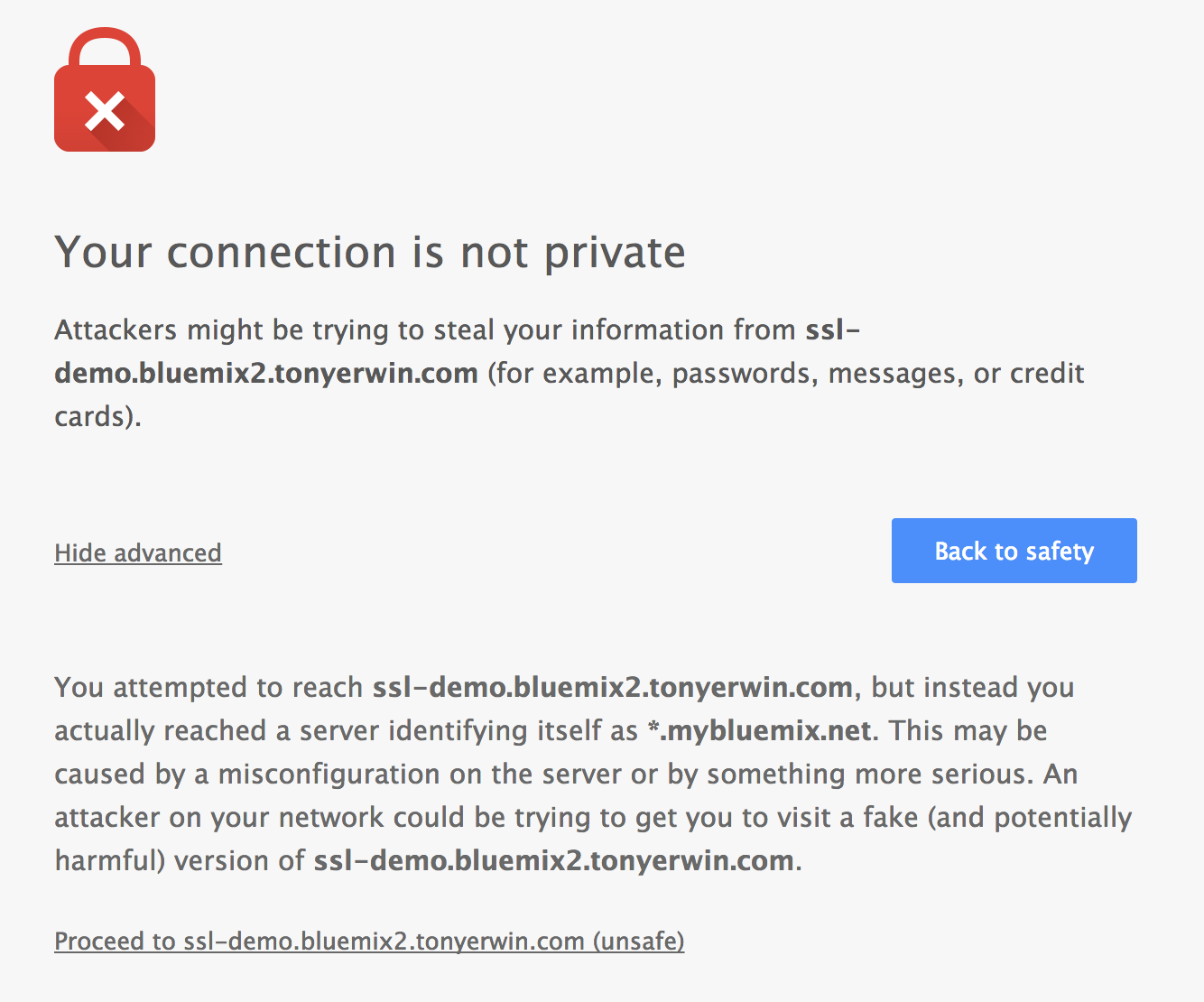
So, this finally brings us to the main point of this post — namely, eliminating that server mismatch by using your own certificate.
Time to Upload!
With that, let’s walkthrough the steps to upload your files (certificate, private key, and optional intermediate certificate) that you collected as part of the prerequisites:
- Go back to the Manage Domains tab where you first defined your custom domain.
- Find your domain in the table and click the
Upload Certificate icon in the SSL Certificate column. Recall I pointed out this icon when you first created your custom domain.
- For each field on the Upload Certificate dialog, click the
Choose button and select the appropriate file.
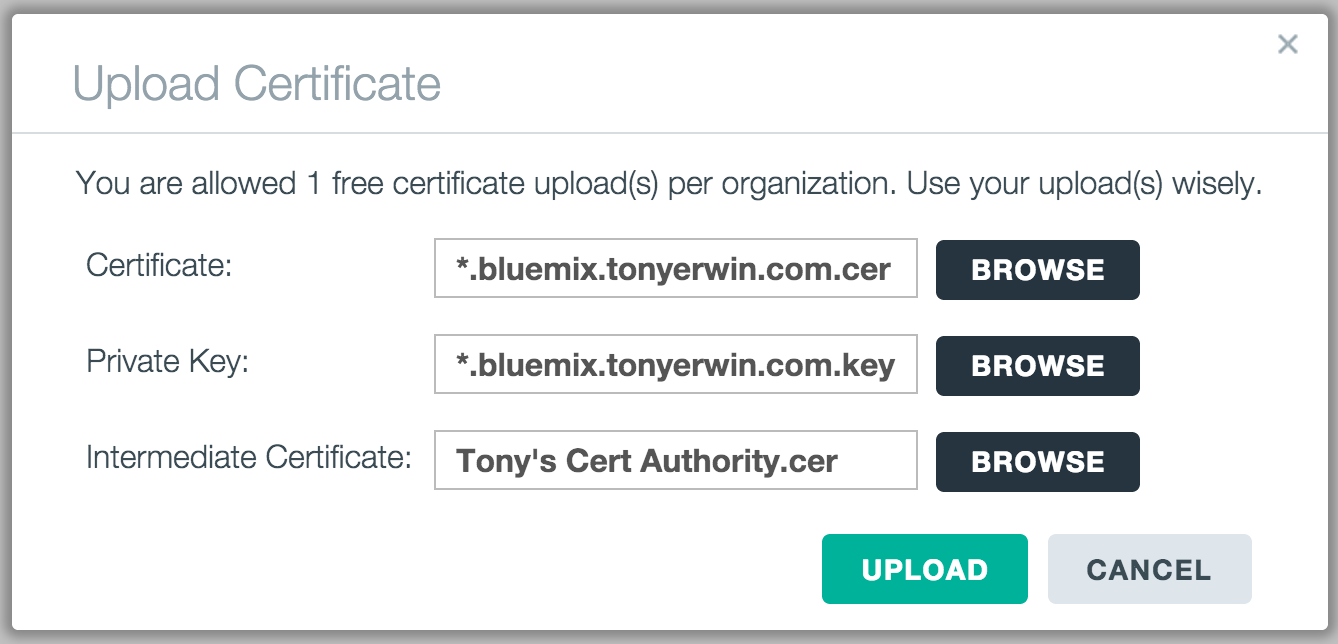
- Click the
Upload button and the upload process should begin. Once the upload is complete, the dialog will disappear and you will be taken back to the Manage Domains table. And, you should also see the icon for your domain has changed to a green padlock.
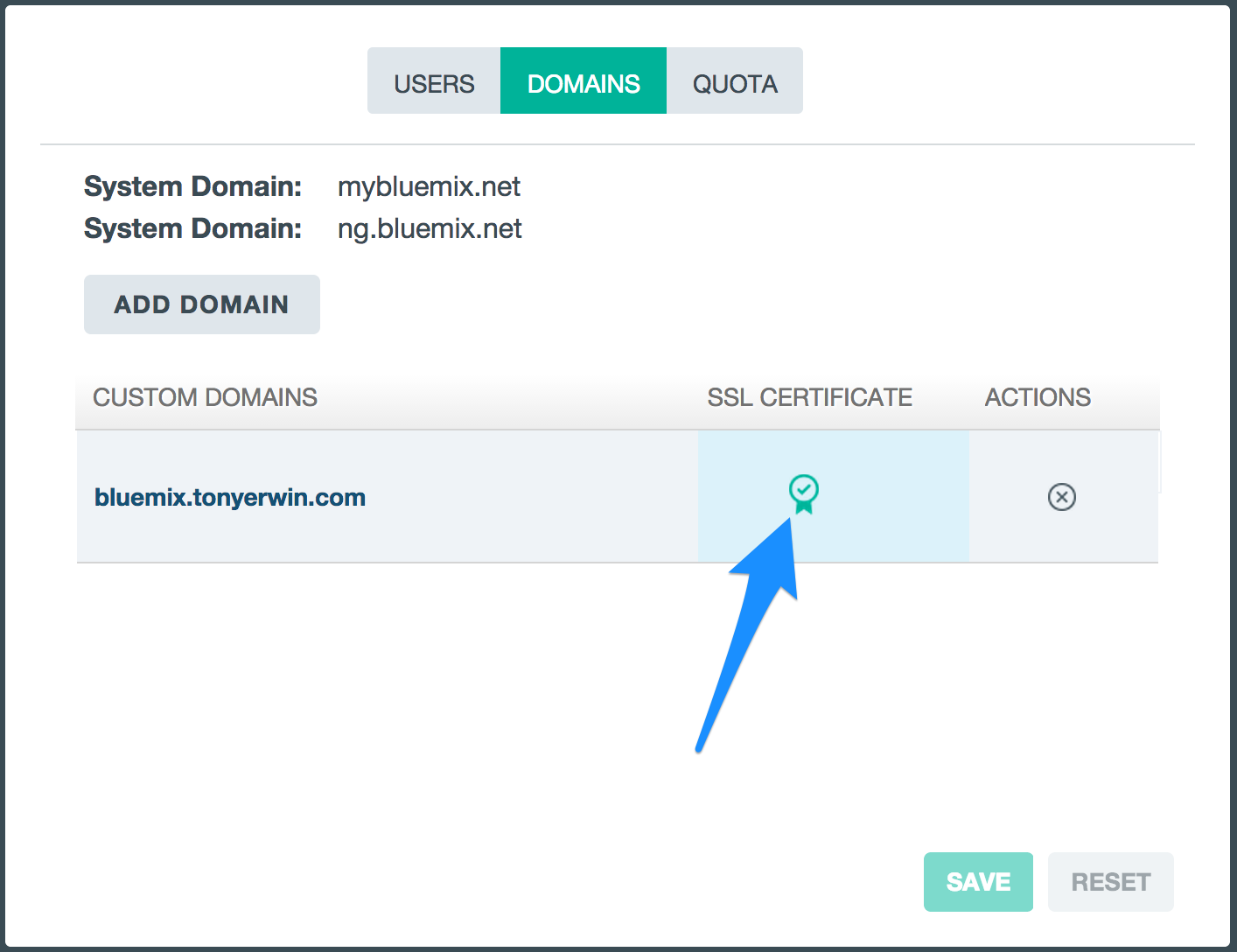
- If you click on the green padlock (which is the
View Certificate icon), you will see a dialog much like the one below where you can see all of the important details about the certificate. Note that the dialog also contains buttons that allow you to Replace or Delete your uploaded files.
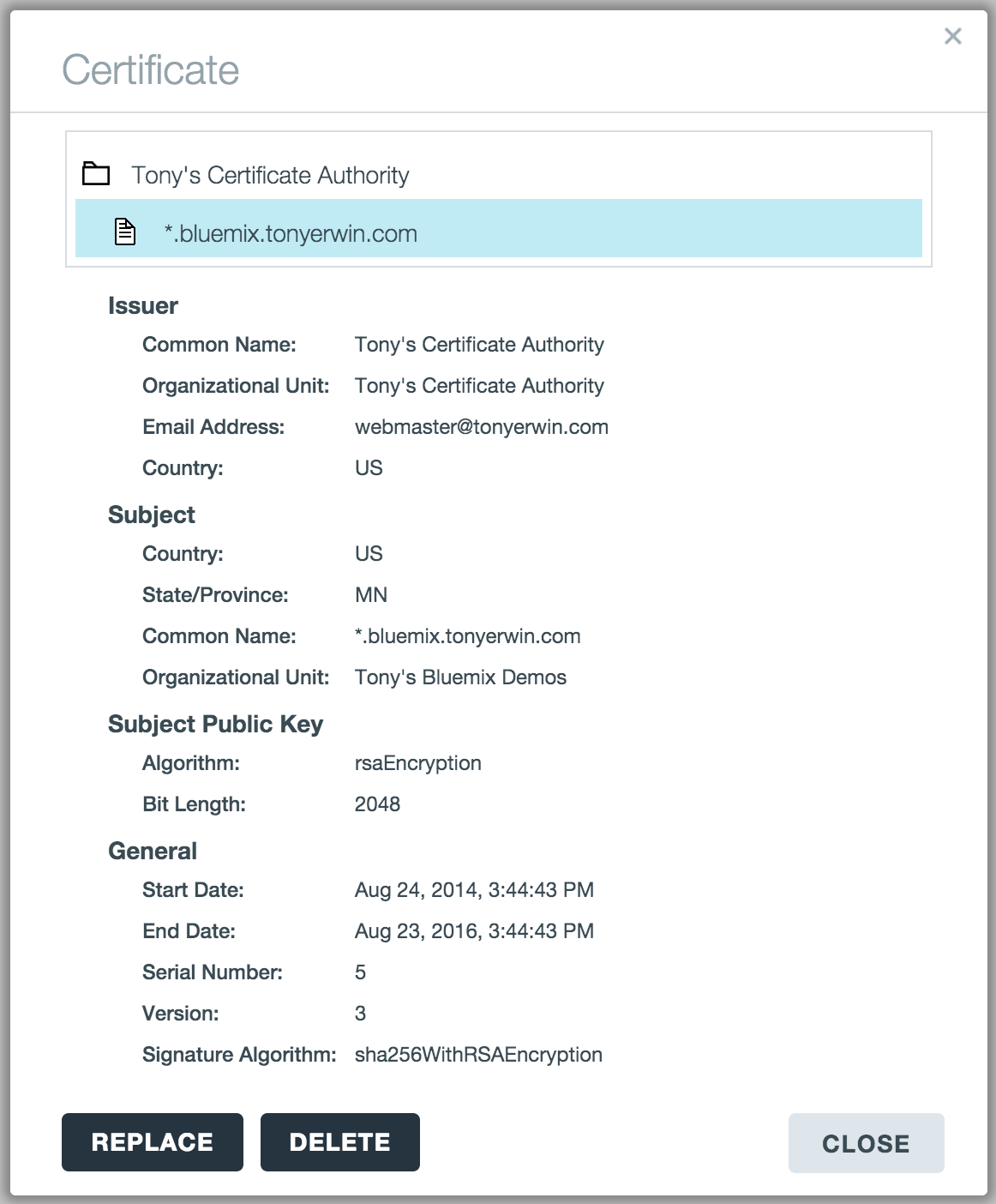
- If you also uploaded an intermediate certificate, you can click the root node of the certificate tree at the top of the dialog. This will show you all of the important information about the intermediate certificate.
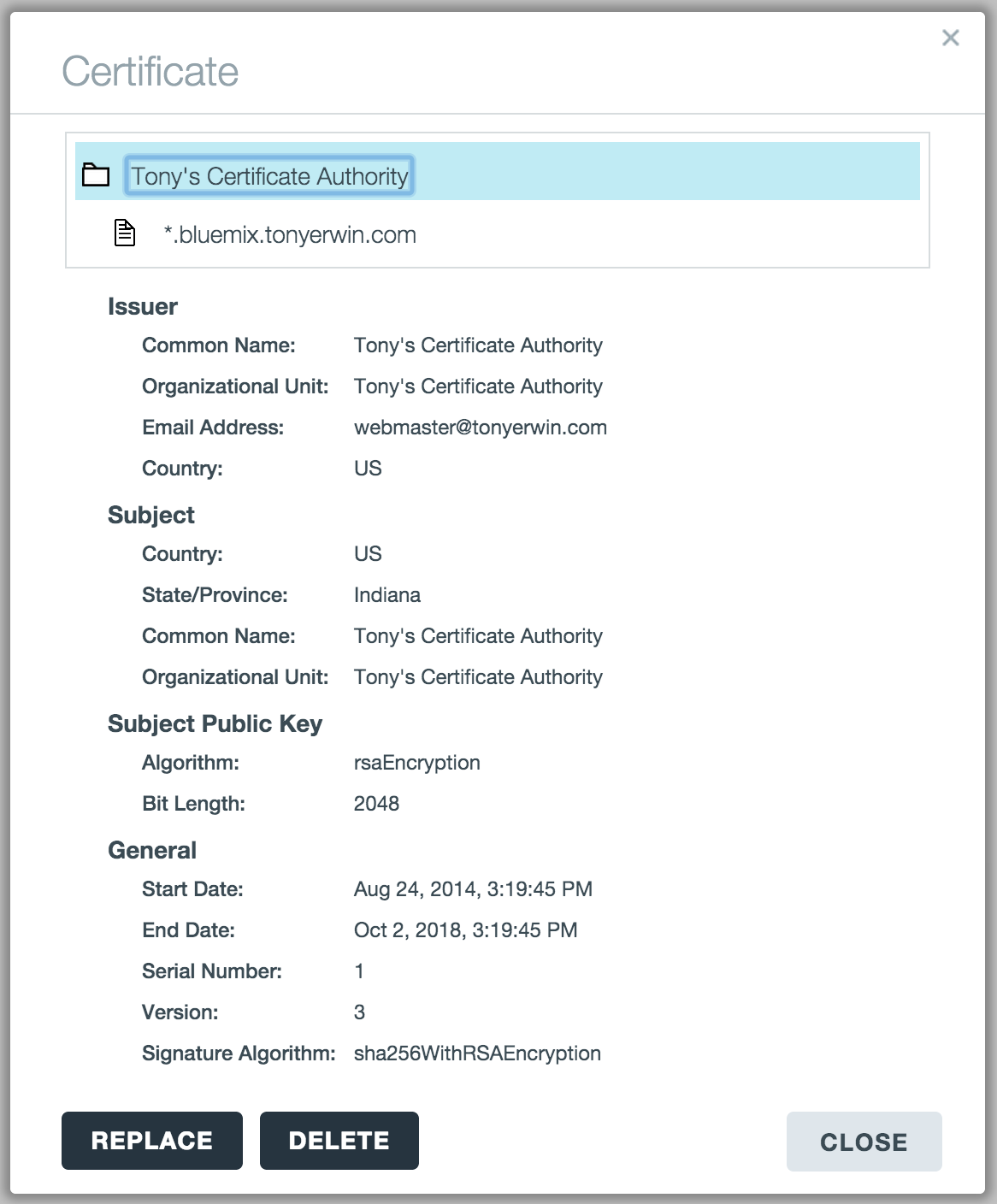
- Click the
Close button on the View Certificate dialog.\
- Optionally, go back to the App Details view for your app and again bring up the Edit Routes dialog. You should see a green padlock next to your route indicating it’s now secured by your uploaded files.
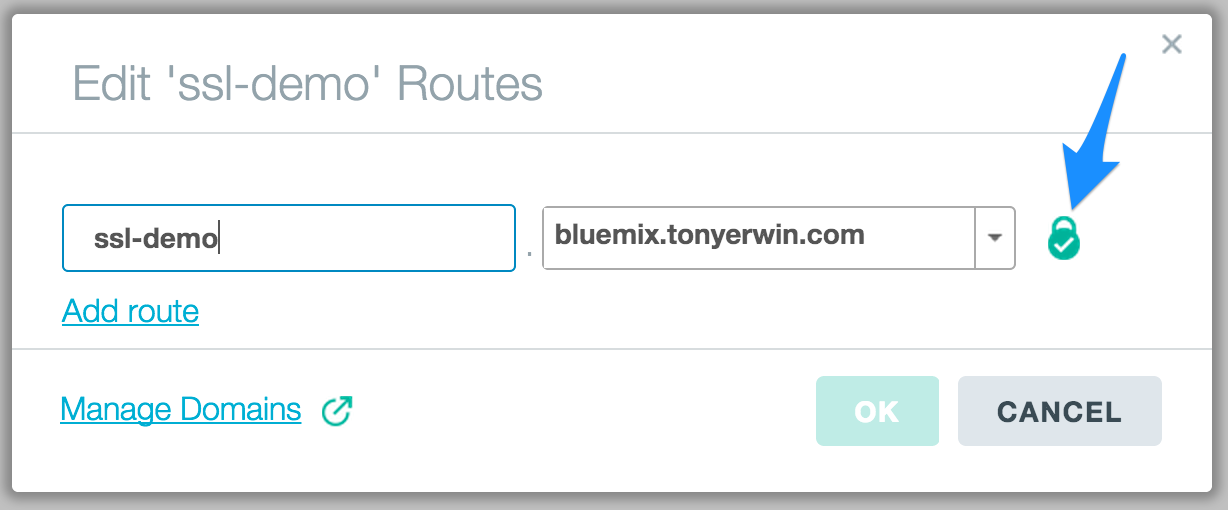
Verify the Results
Now, if you try to access your route via the https protocol, the browser should declare your site is properly identified and trusted. For example, the screenshot below shows the certificate details for my app from Chrome:
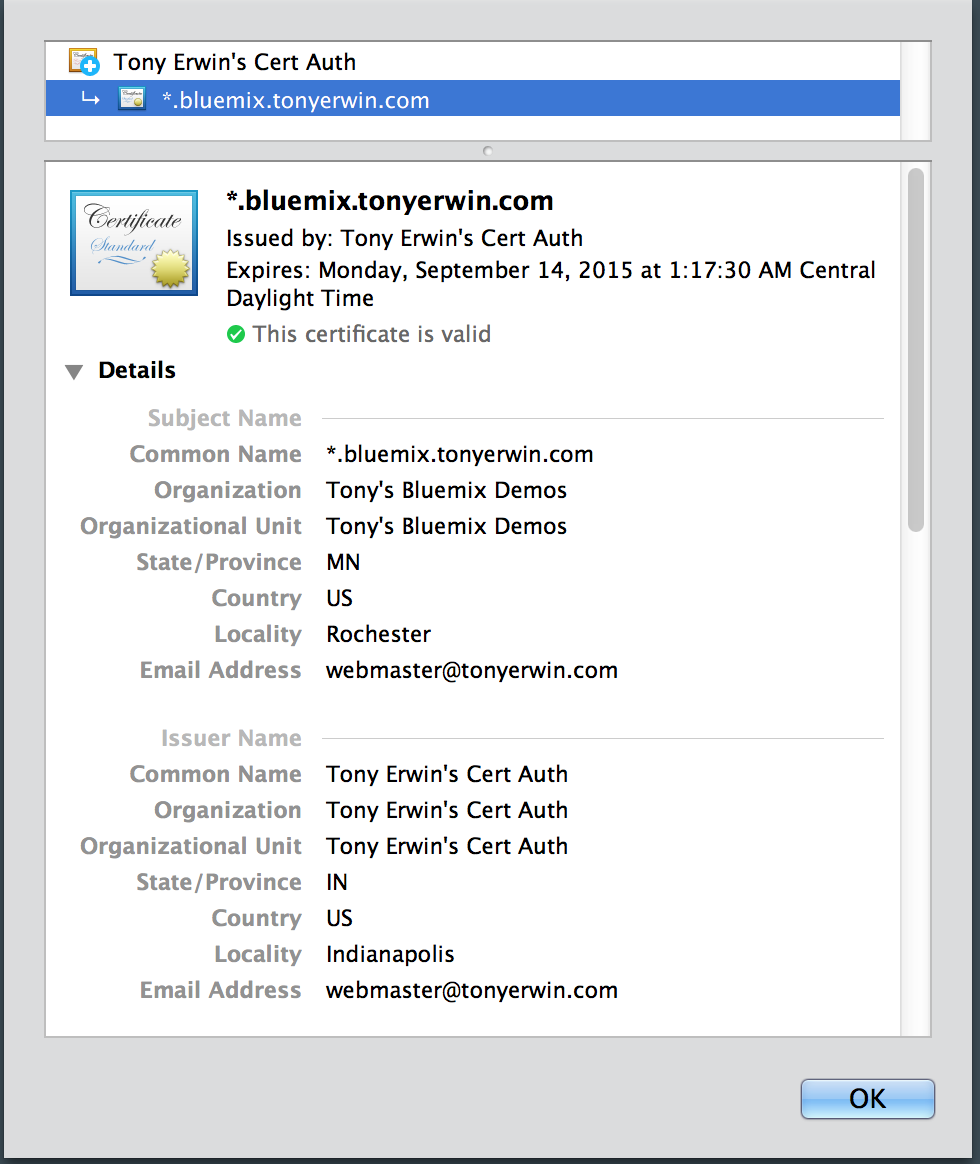
But, for full disclosure, if you visit my app (see https://ssl-demo.bluemix.tonyerwin.com), you’ll get a slightly different result because I didn’t actually get my certificates from a trusted certificate authority. Instead, I used Keychain Access on my Mac to generate a self-signed intermediate certificate. In addition, I configured the certificate to be trusted on my system. (If you’re interested, I described these steps in my other post on creating self-signed certificates.) Since my intermediate certificate is obviously not trusted on your system, you’ll see a browser warning if you try to access my app. The screen shot below shows the warning I see in Chrome if I try to access my app from another system. While there’s still an error, notice that it’s no longer a server mismatch error. Instead, Chrome tells me the certificate was issued by an entity not trusted by my computer.
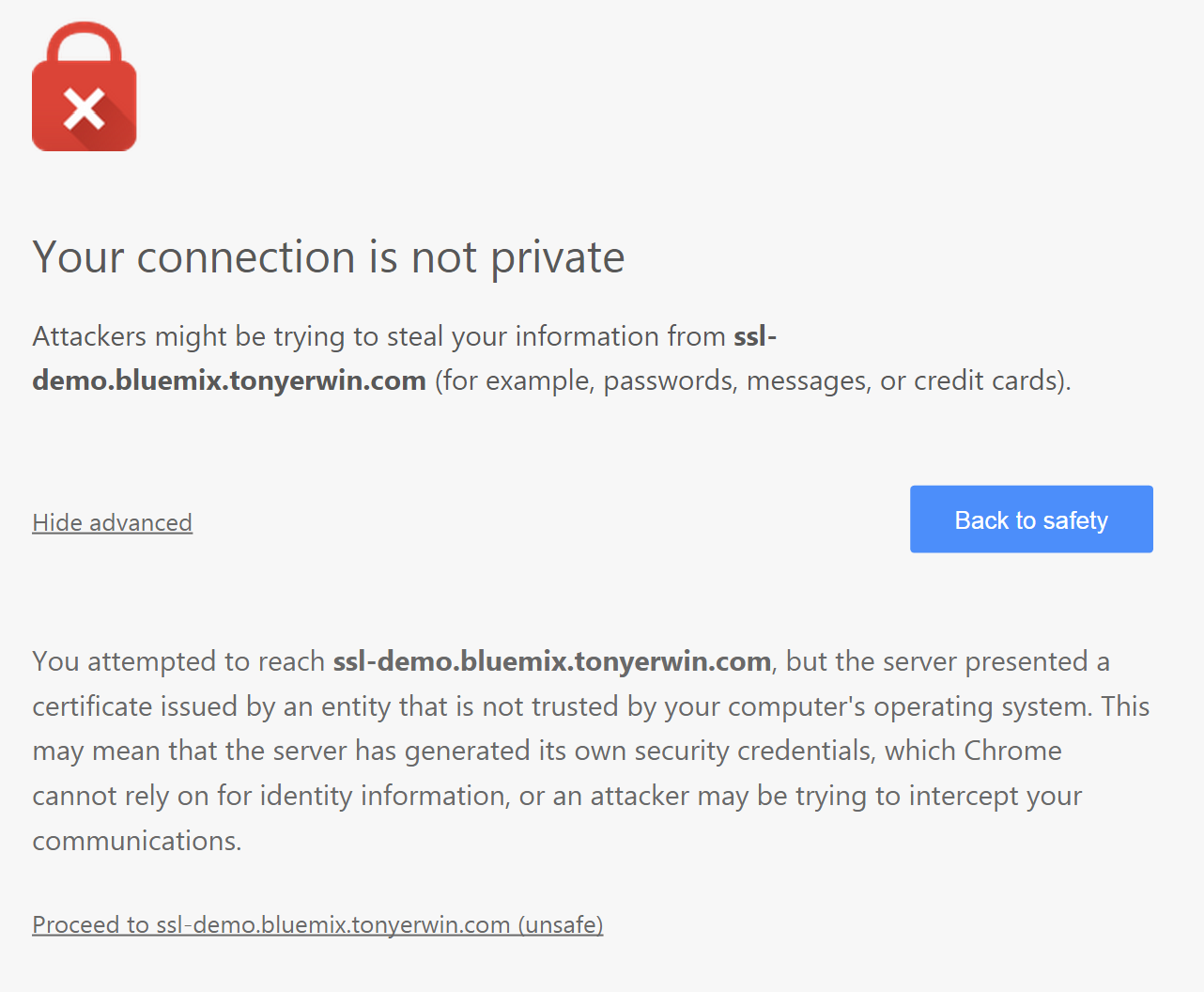
Redirecting HTTP to HTTPS
So, we’re in pretty shape now, but there’s one more important item to consider. In my previous post on redirecting http to https, I explained that unless you take steps (either in your app code or app configuration), unencrypted http traffic will still be allowed. You can see an example of that if you visit my live app using the http protocol at http://ssl-demo.bluemix.tonyerwin.com. In the other post, I go into the problem in much more detail, and I describe a sample Node.js app that demonstrates one approach to solving it. That sample is also running live using my custom domain (and certificates) at http://redirect-demo.bluemix.tonyerwin.com.
Conclusion
We covered a lot of ground in this tutorial as you learned all about Bluemix support for associating your certificates with custom domains. Along the way, you saw how to add a custom domain using the Bluemix UI, setup an app to use a custom domain in a route, configure DNS so your custom domain resolves to the IP address of the Bluemix router, and finally upload a certificate for a custom domain. I also briefly touched on some related issues (covered in more detail in other posts) such as generating self-signed certificates and redirecting http traffic to https.
Updated August 10, 2015: Remove mention that a certificate must be a wildcard certificate. That limitation is no longer in place.

